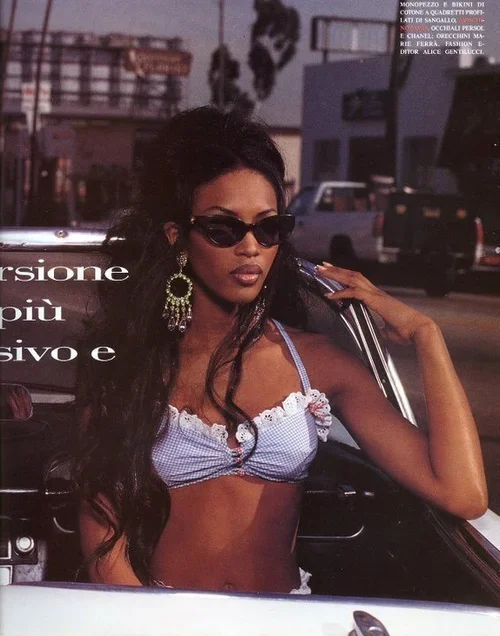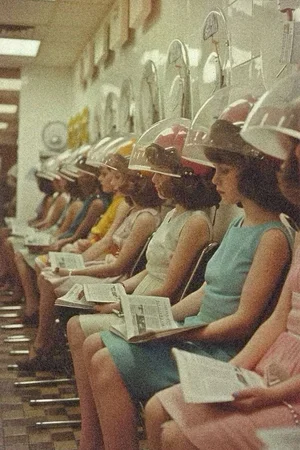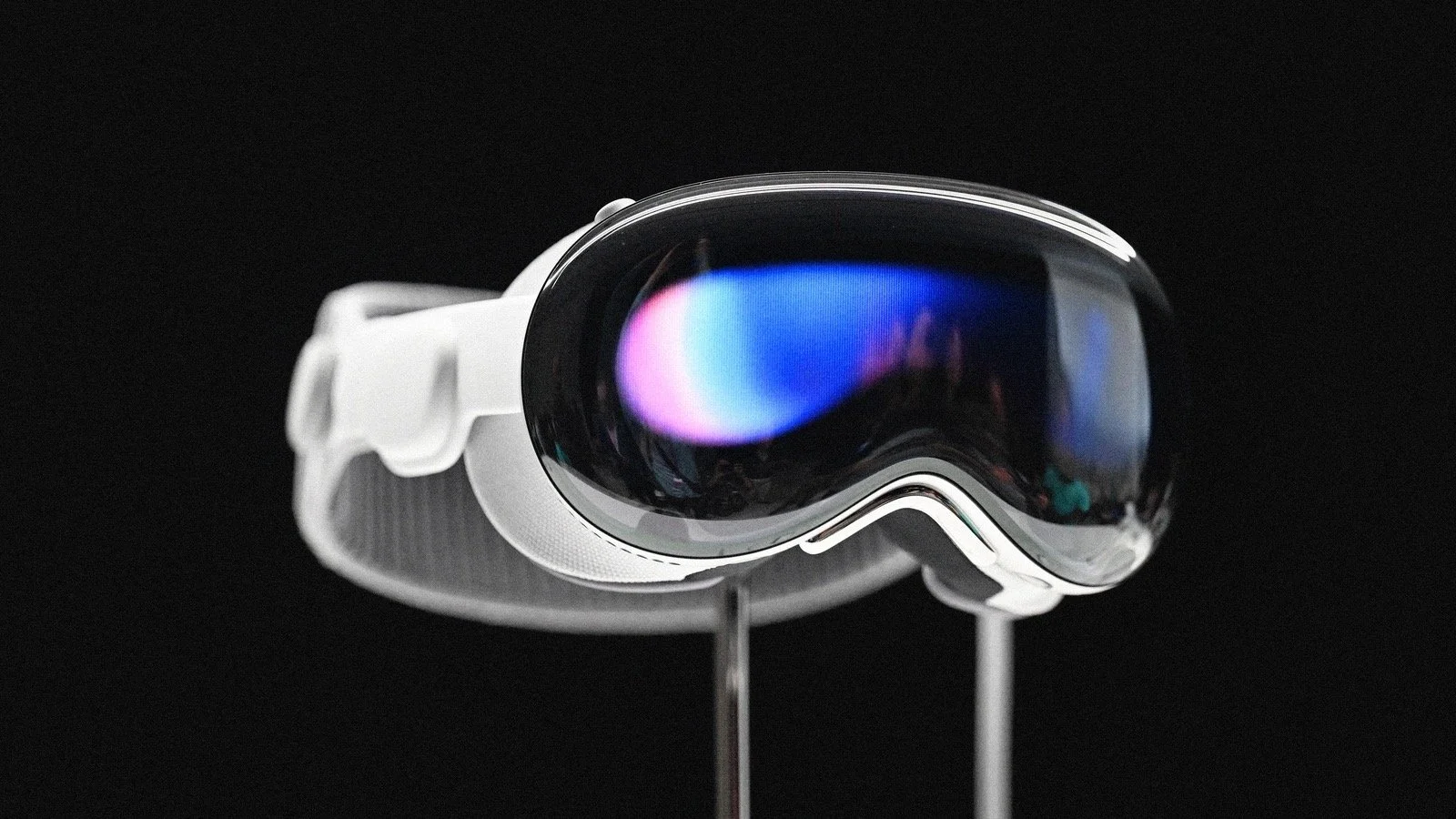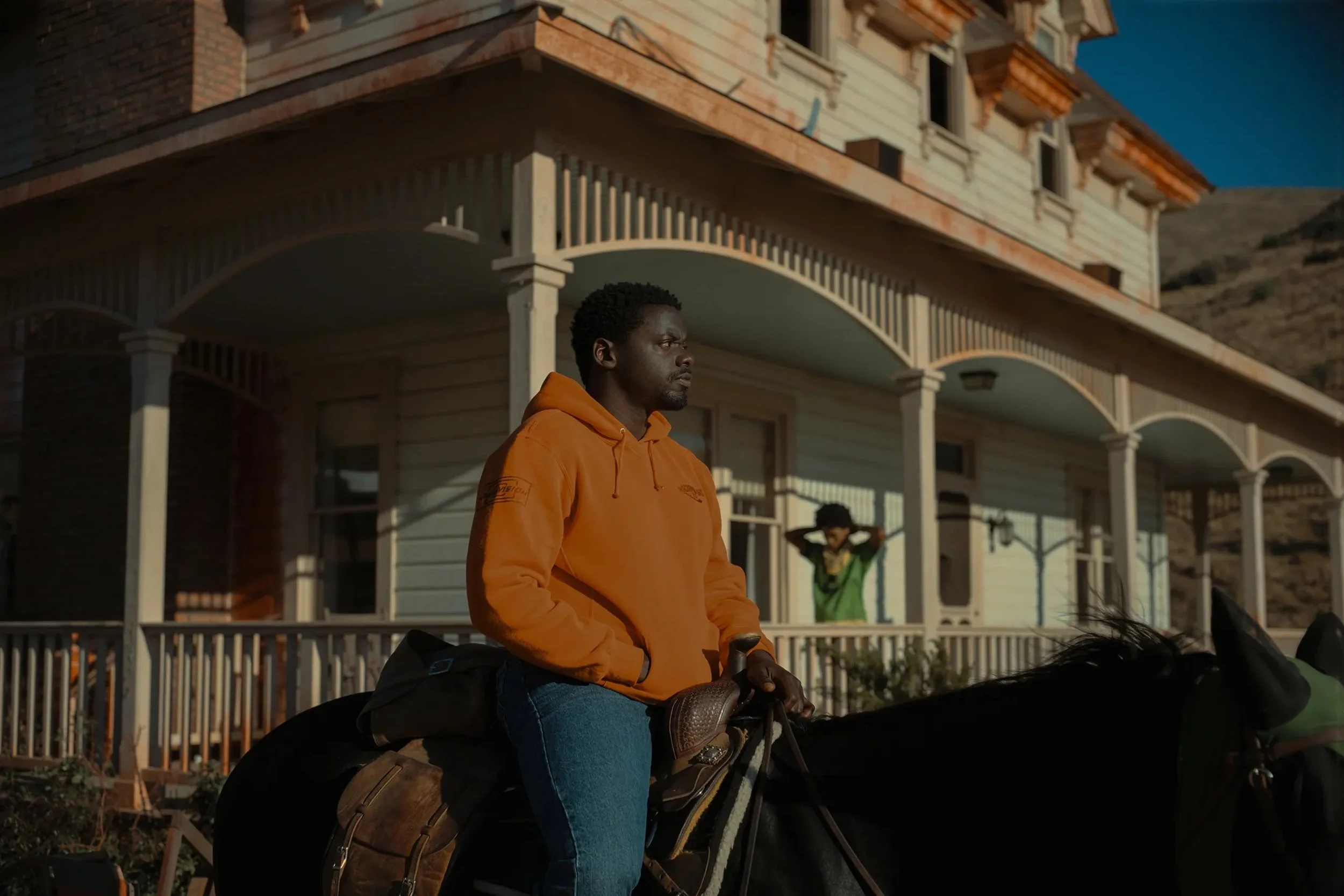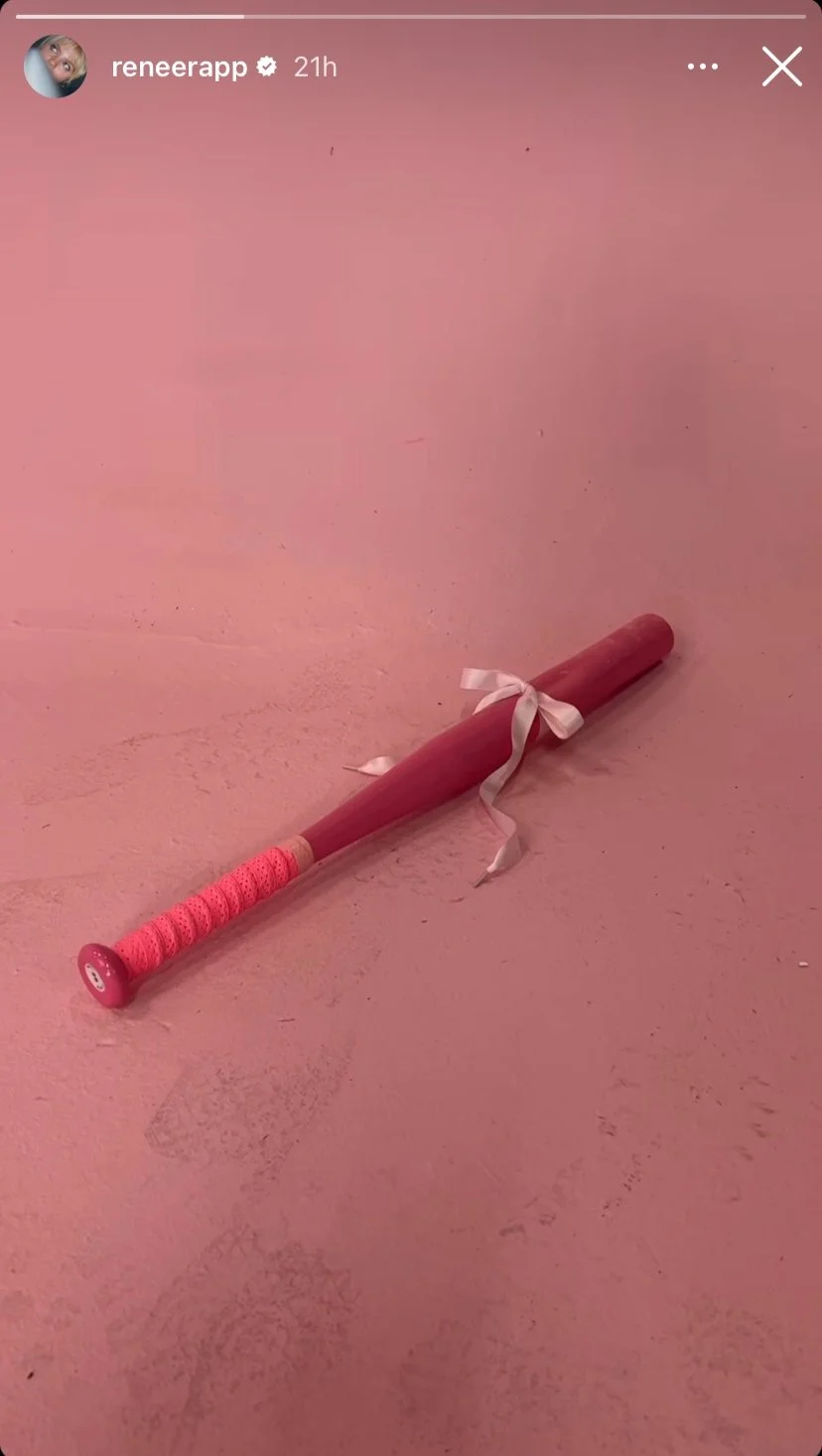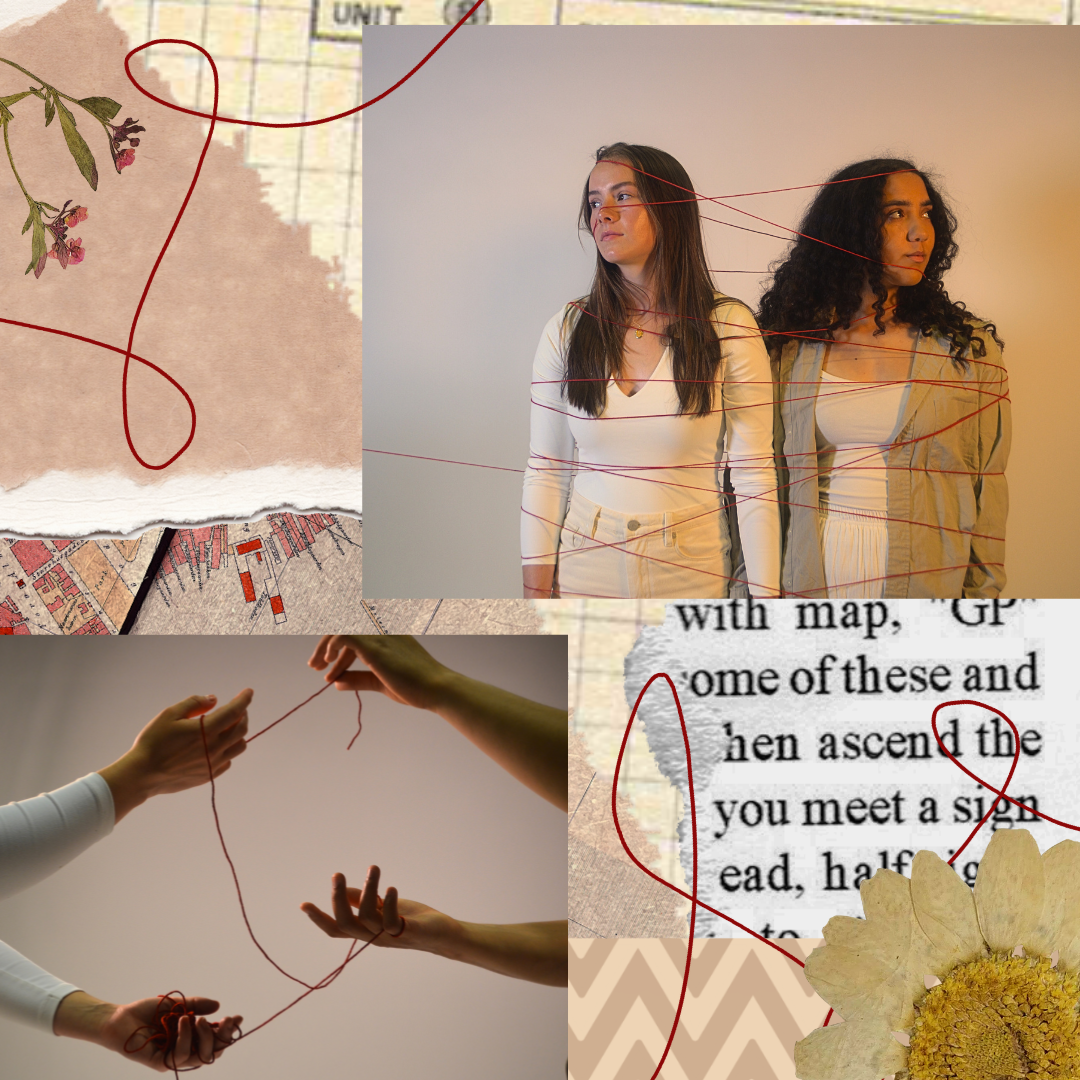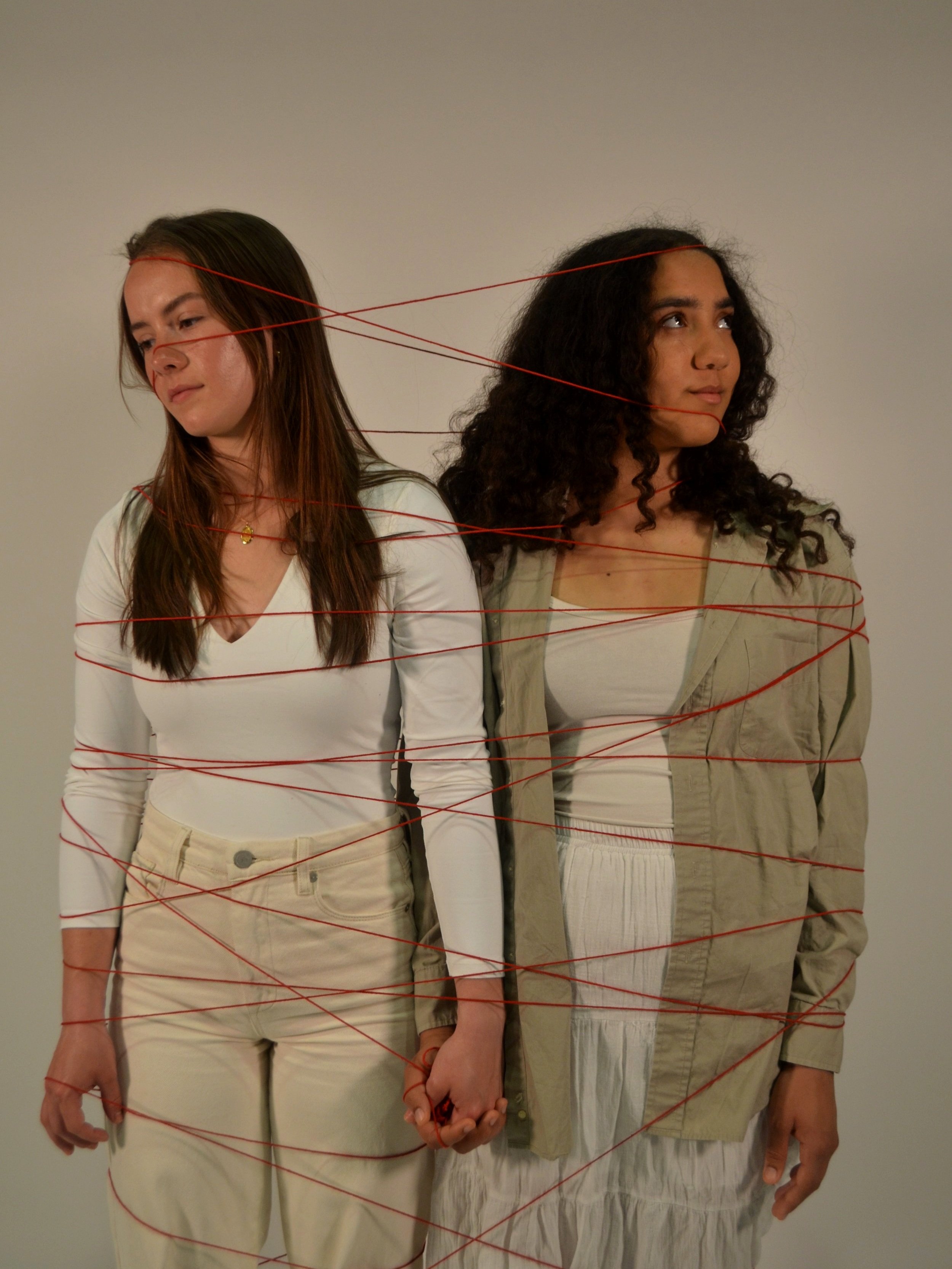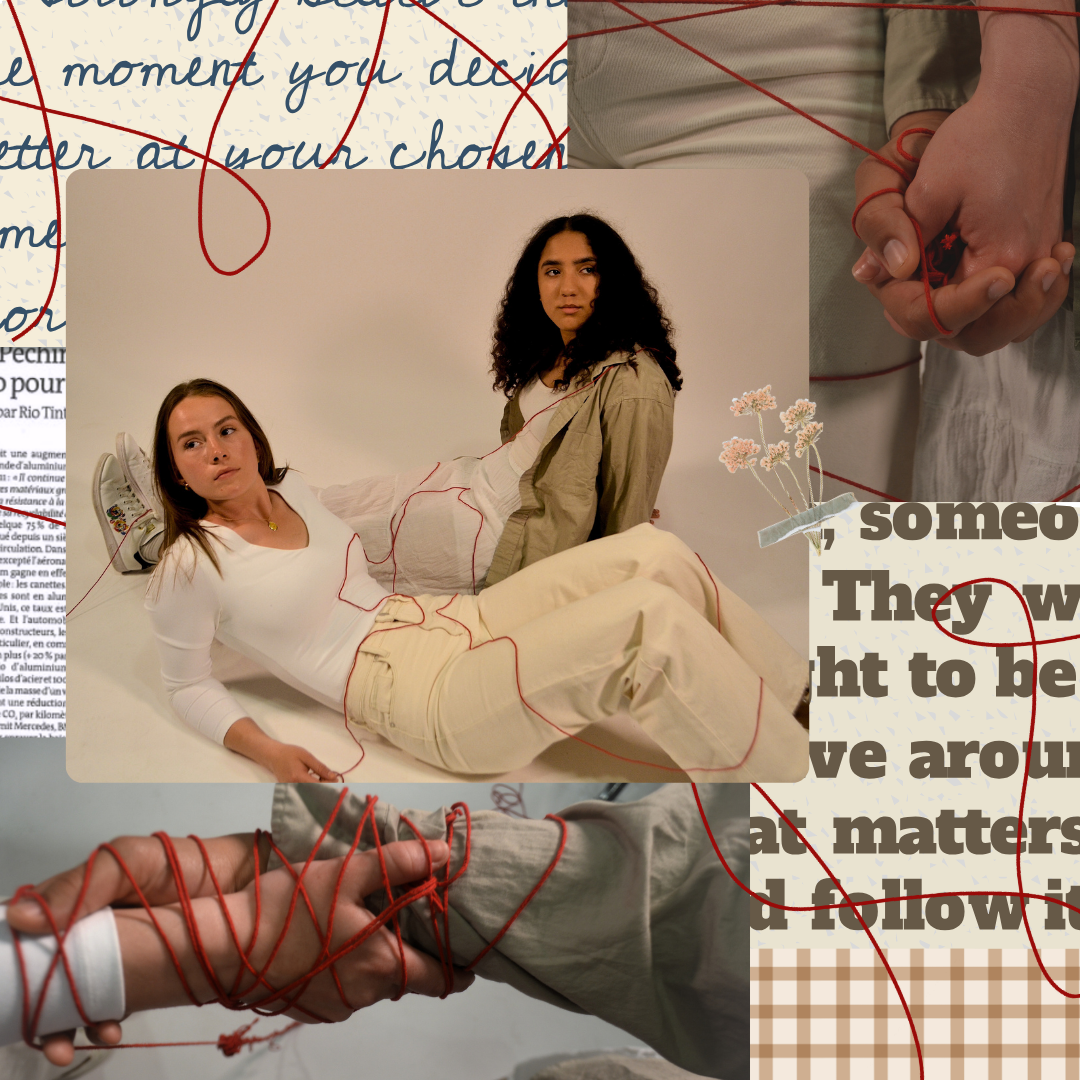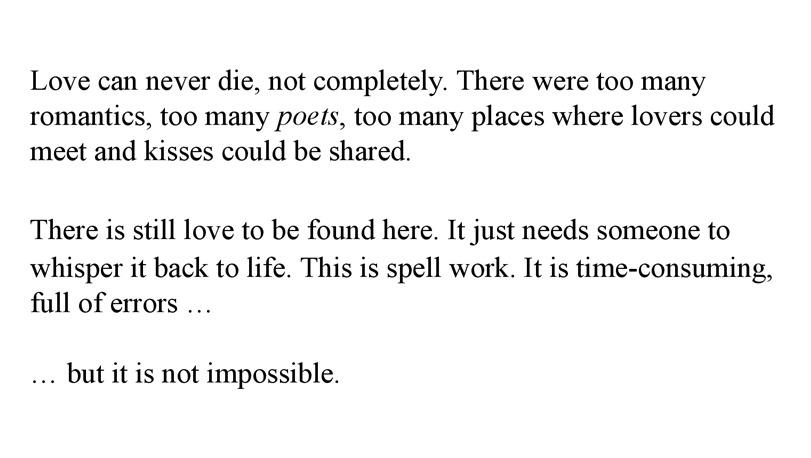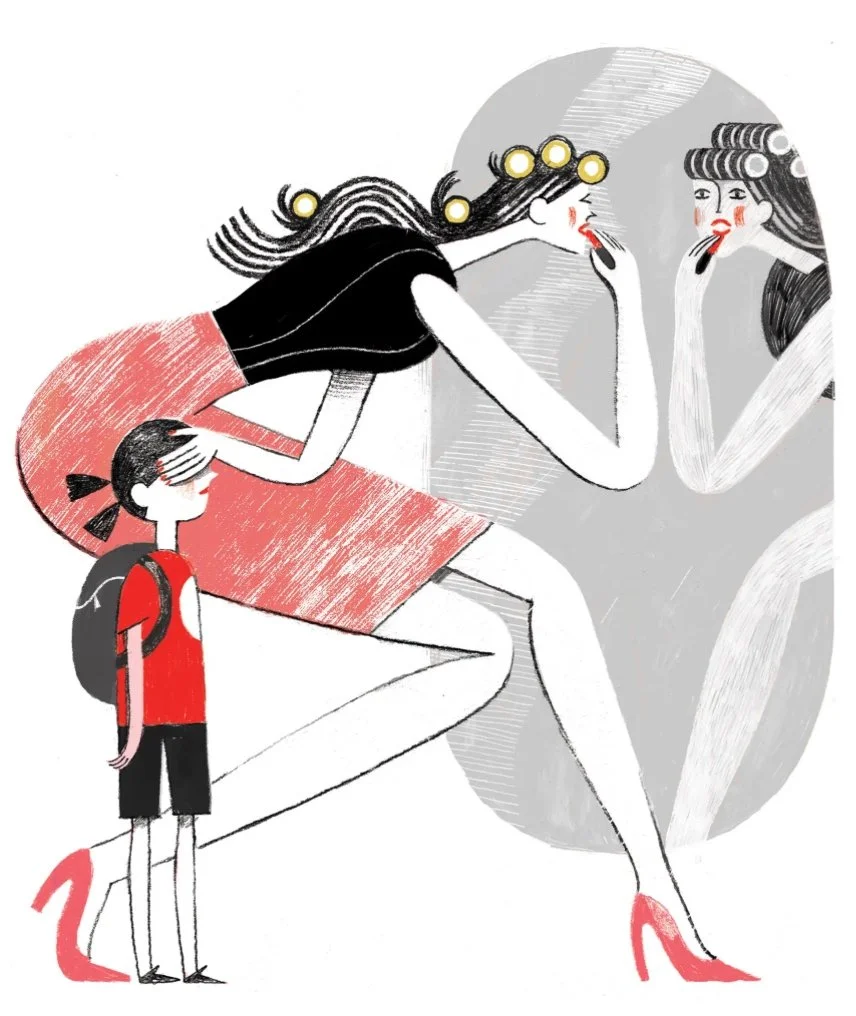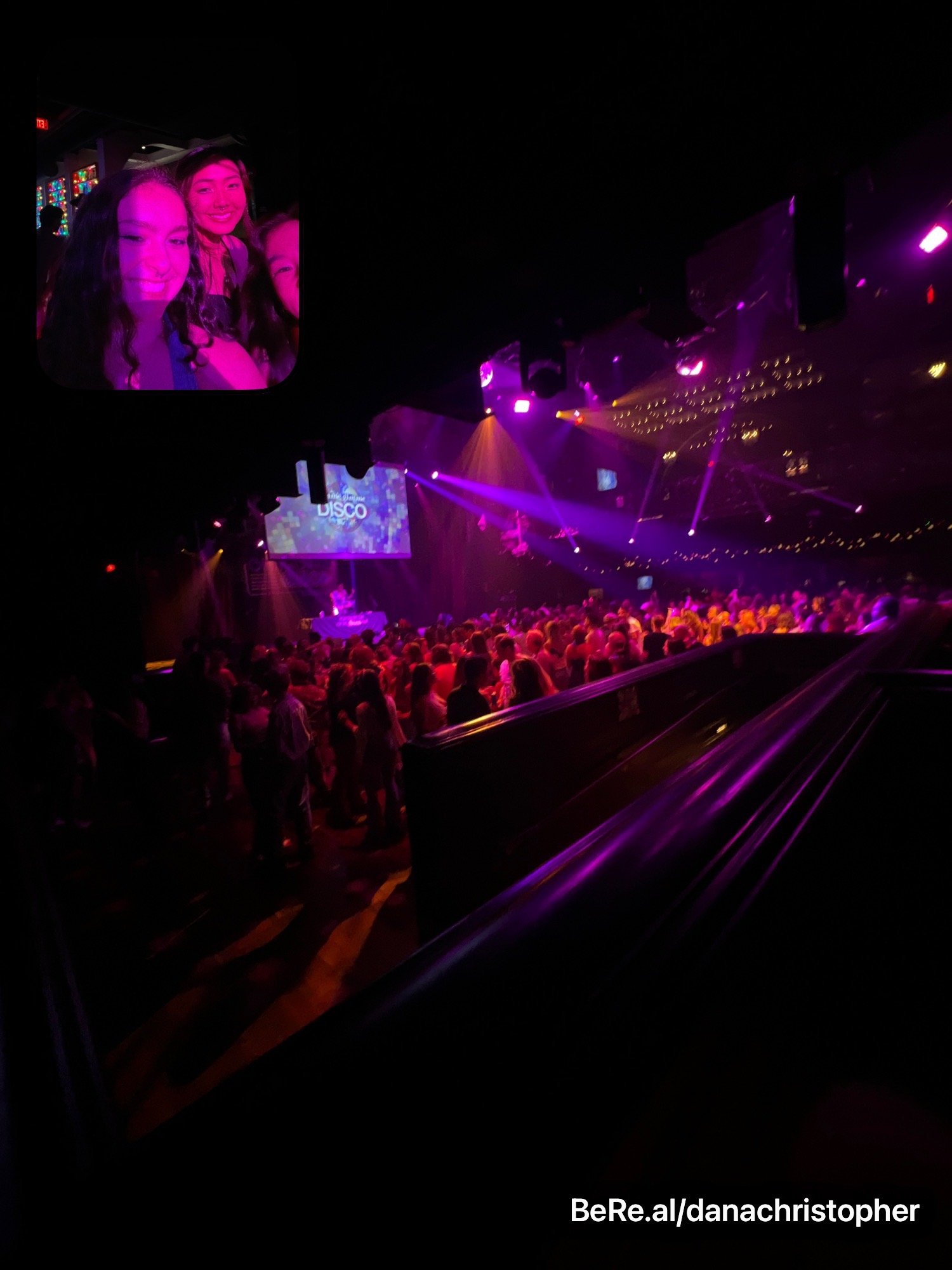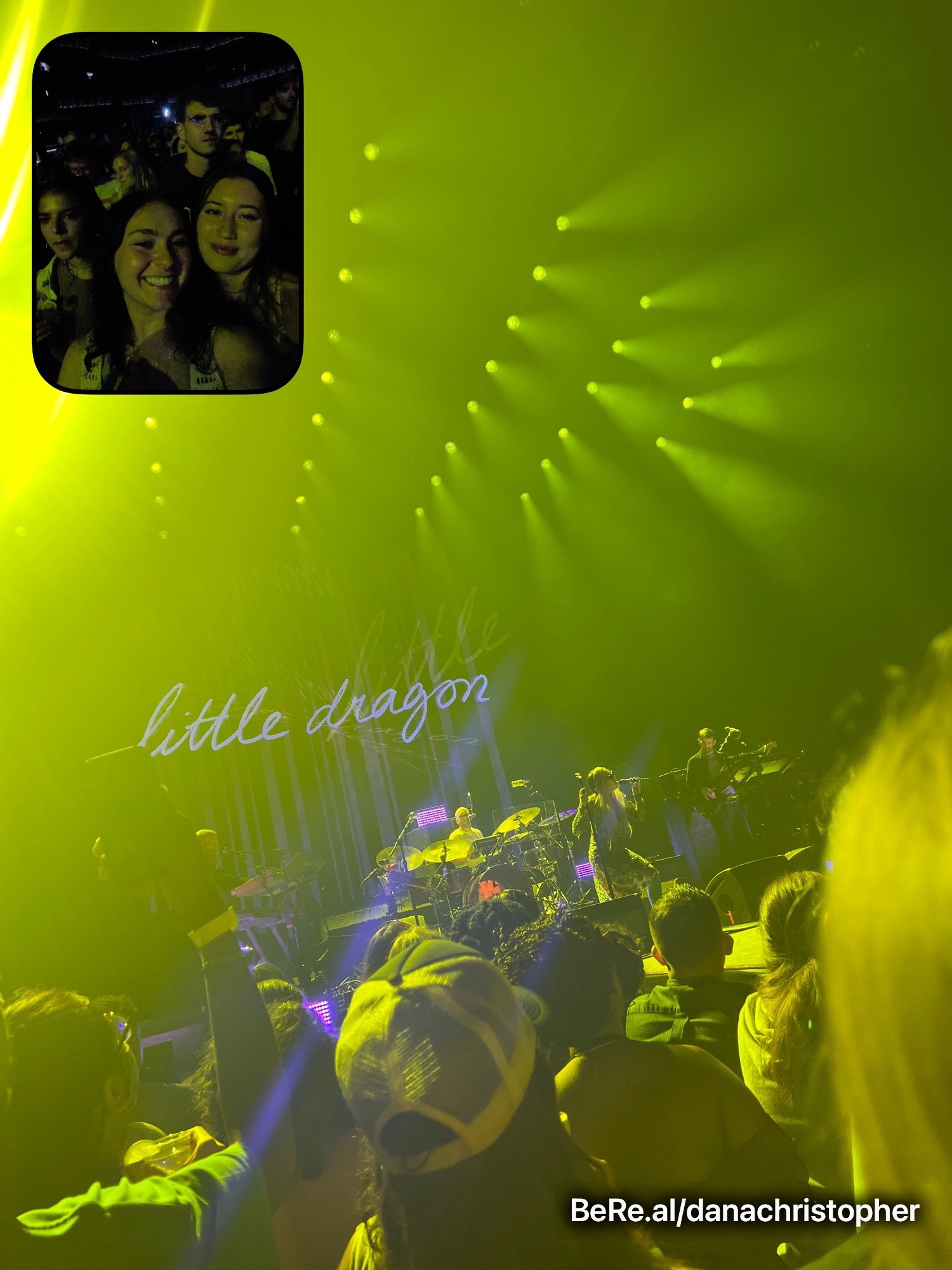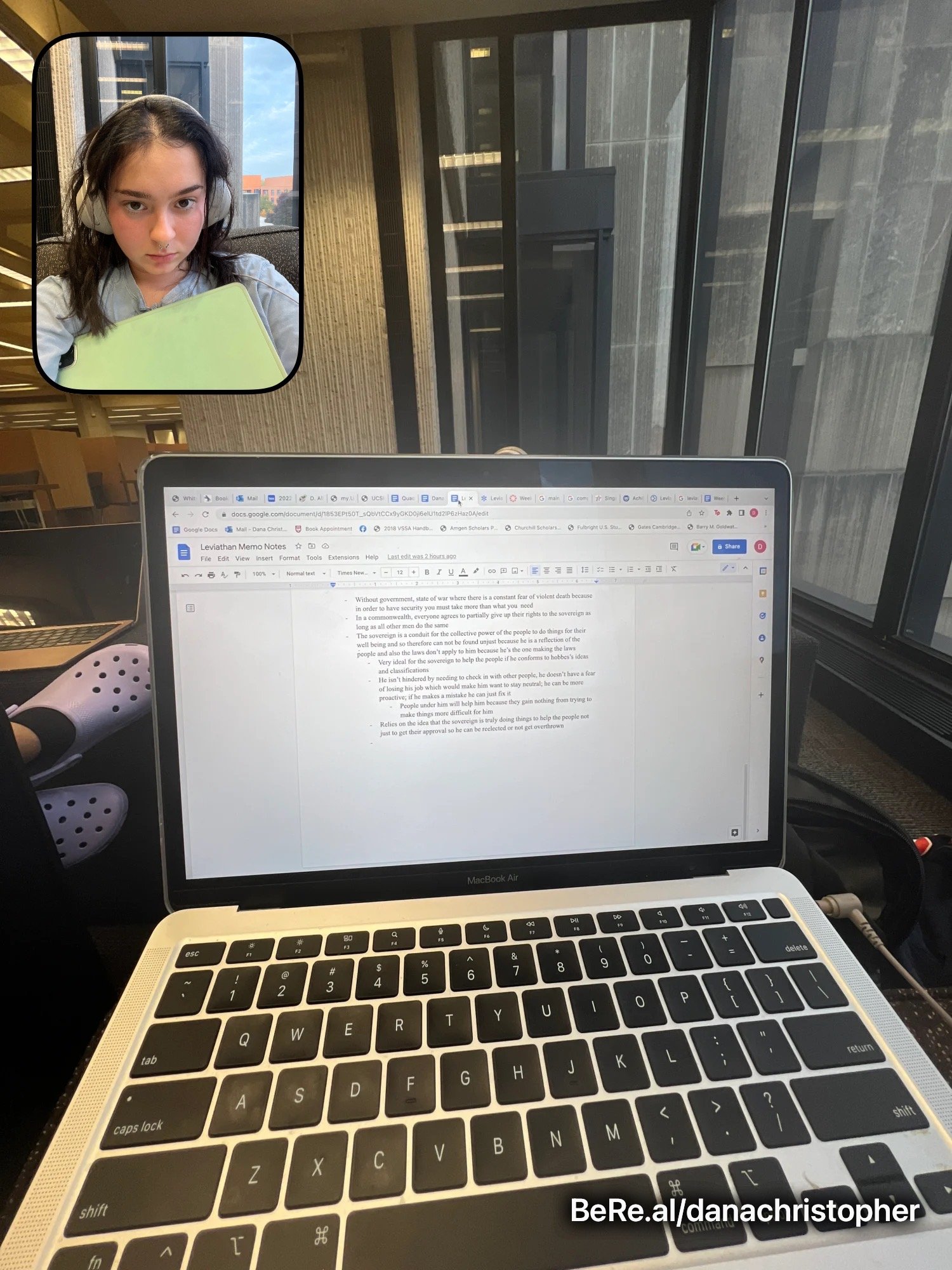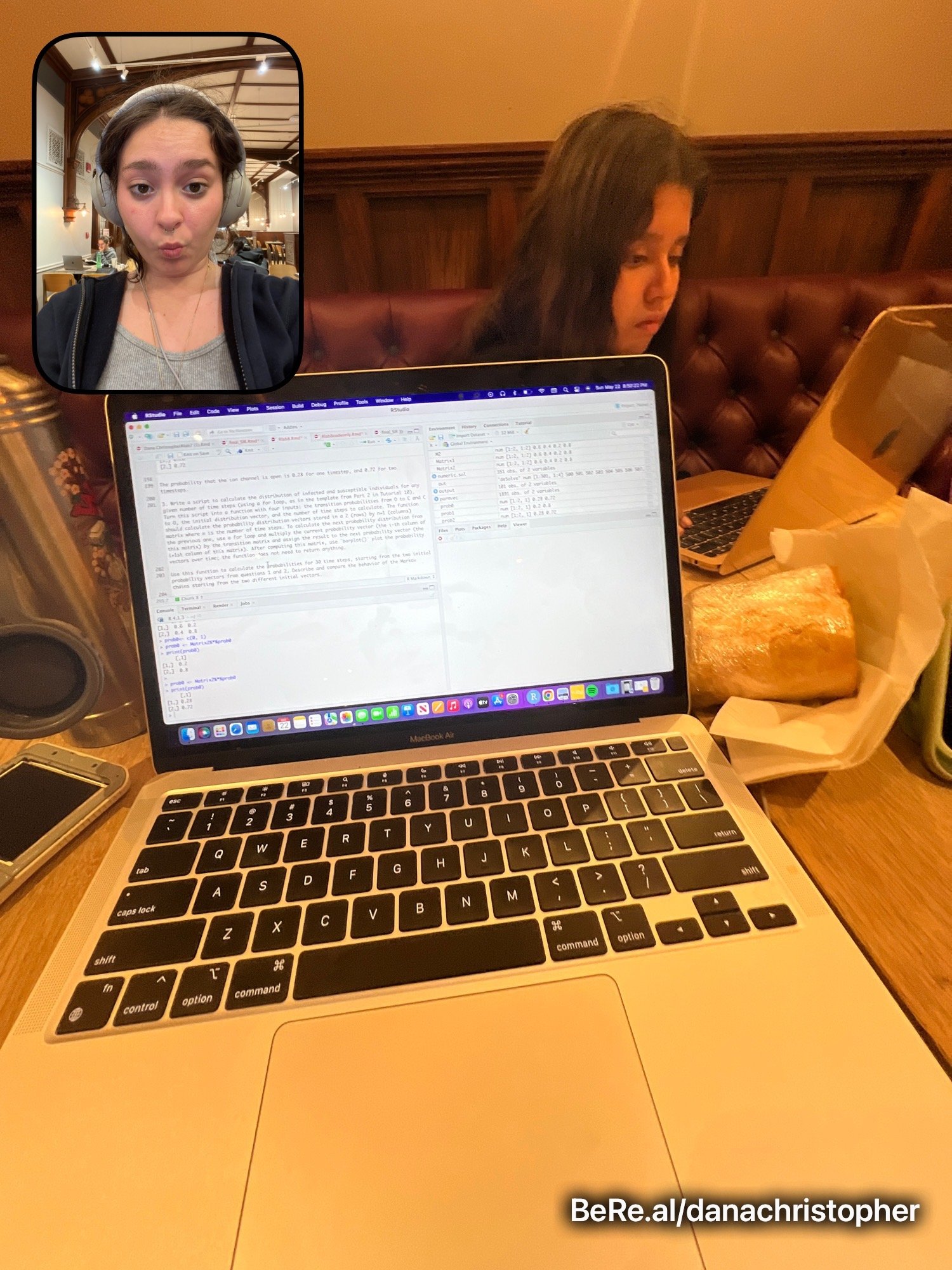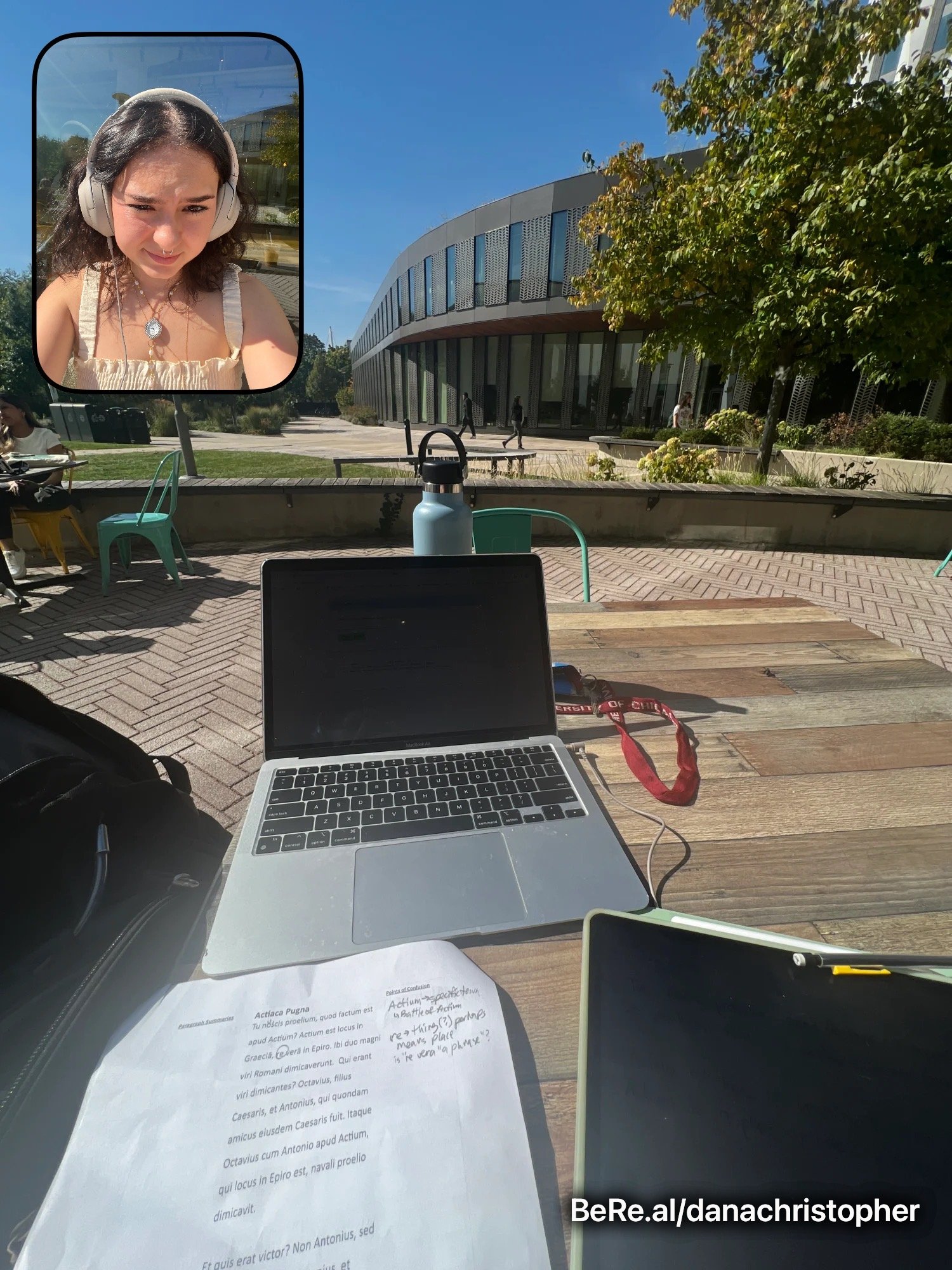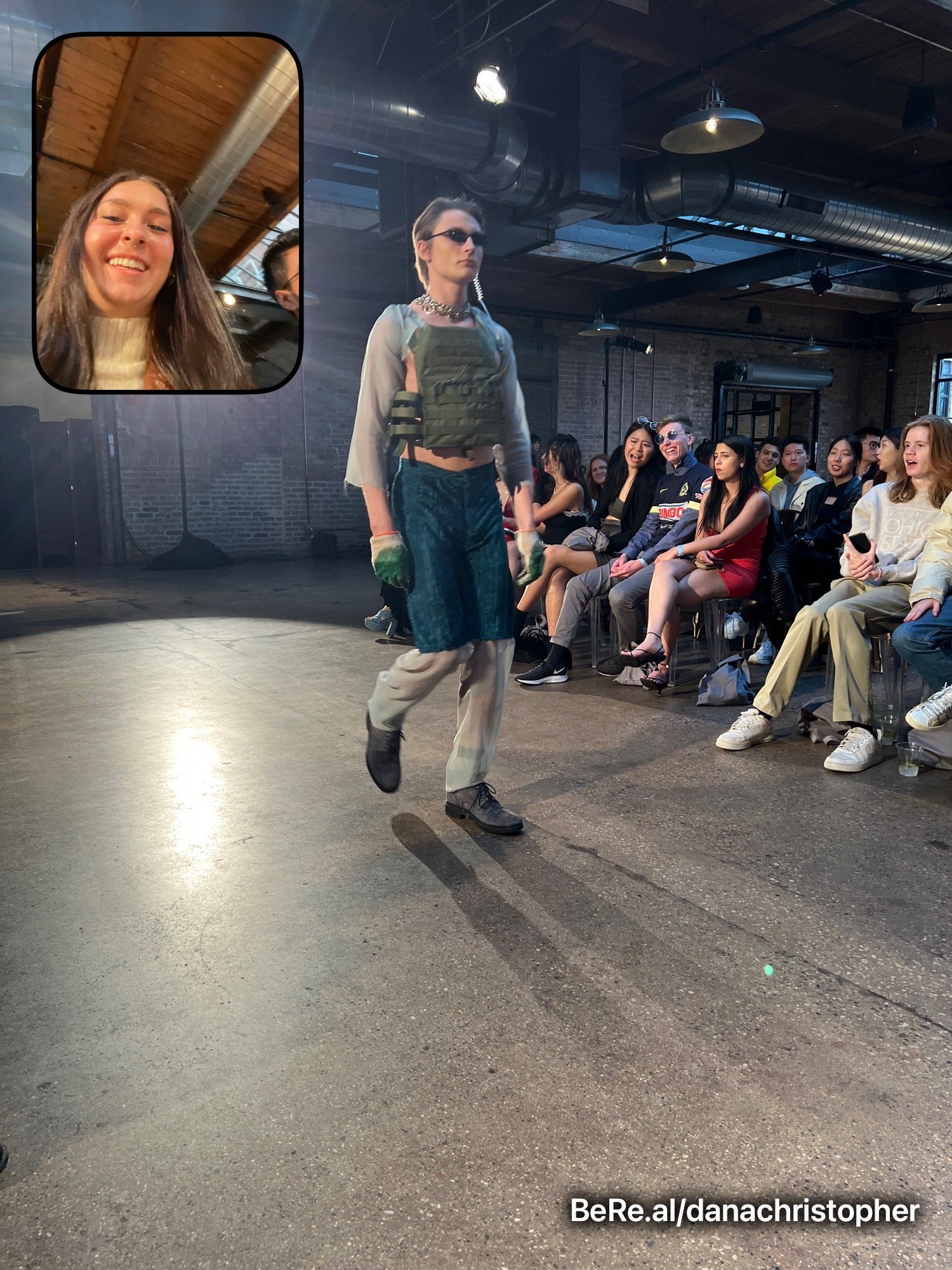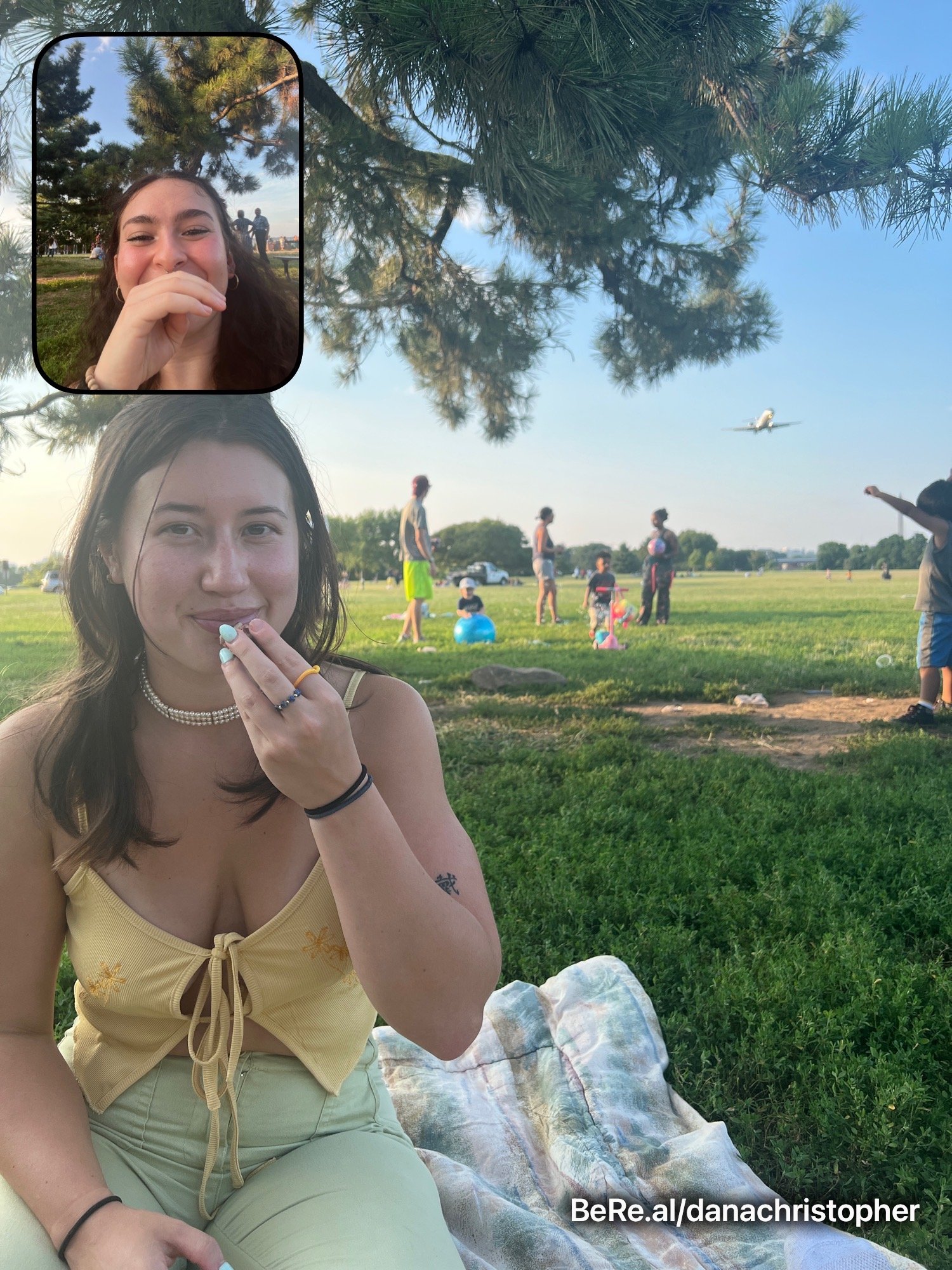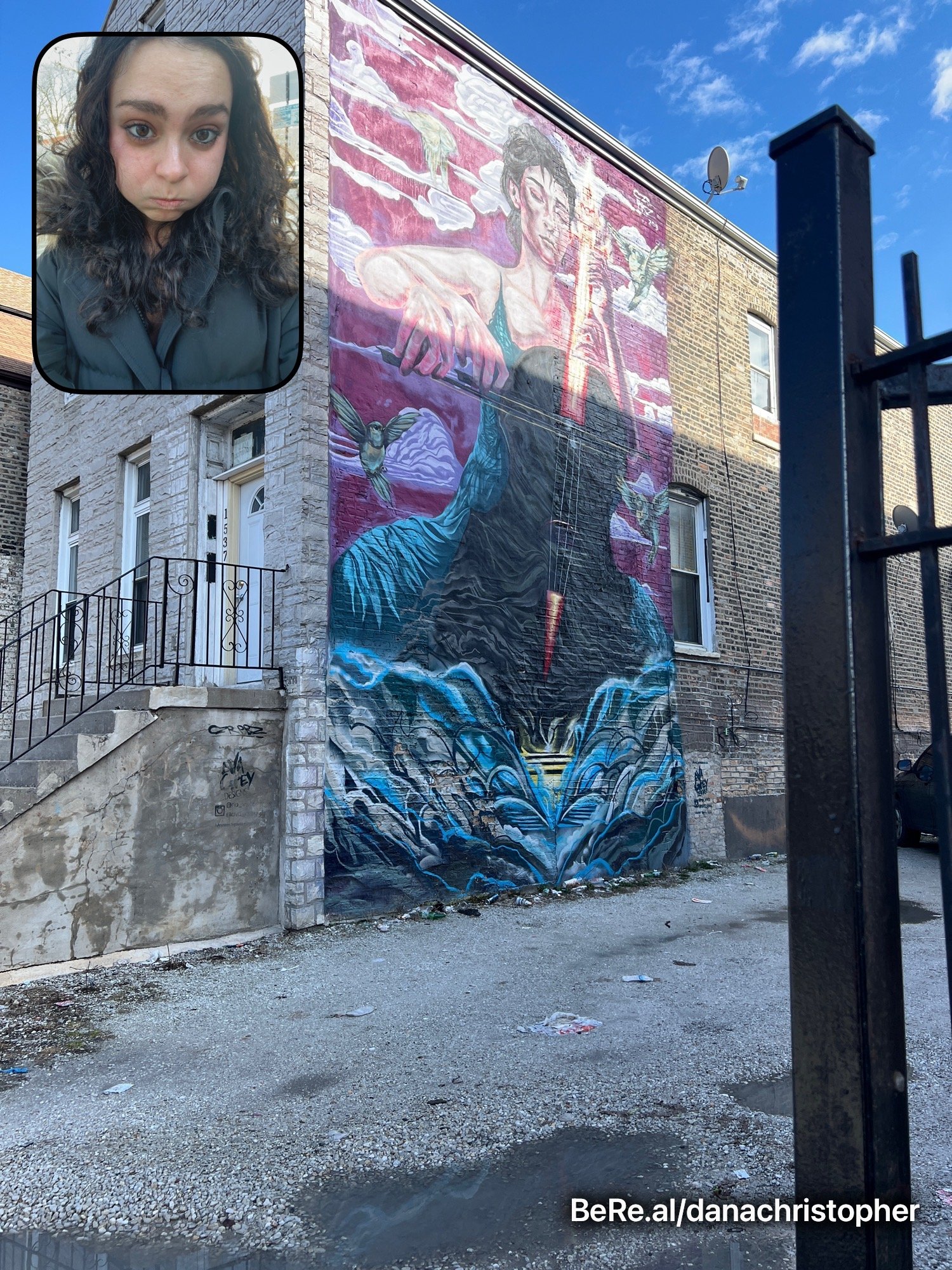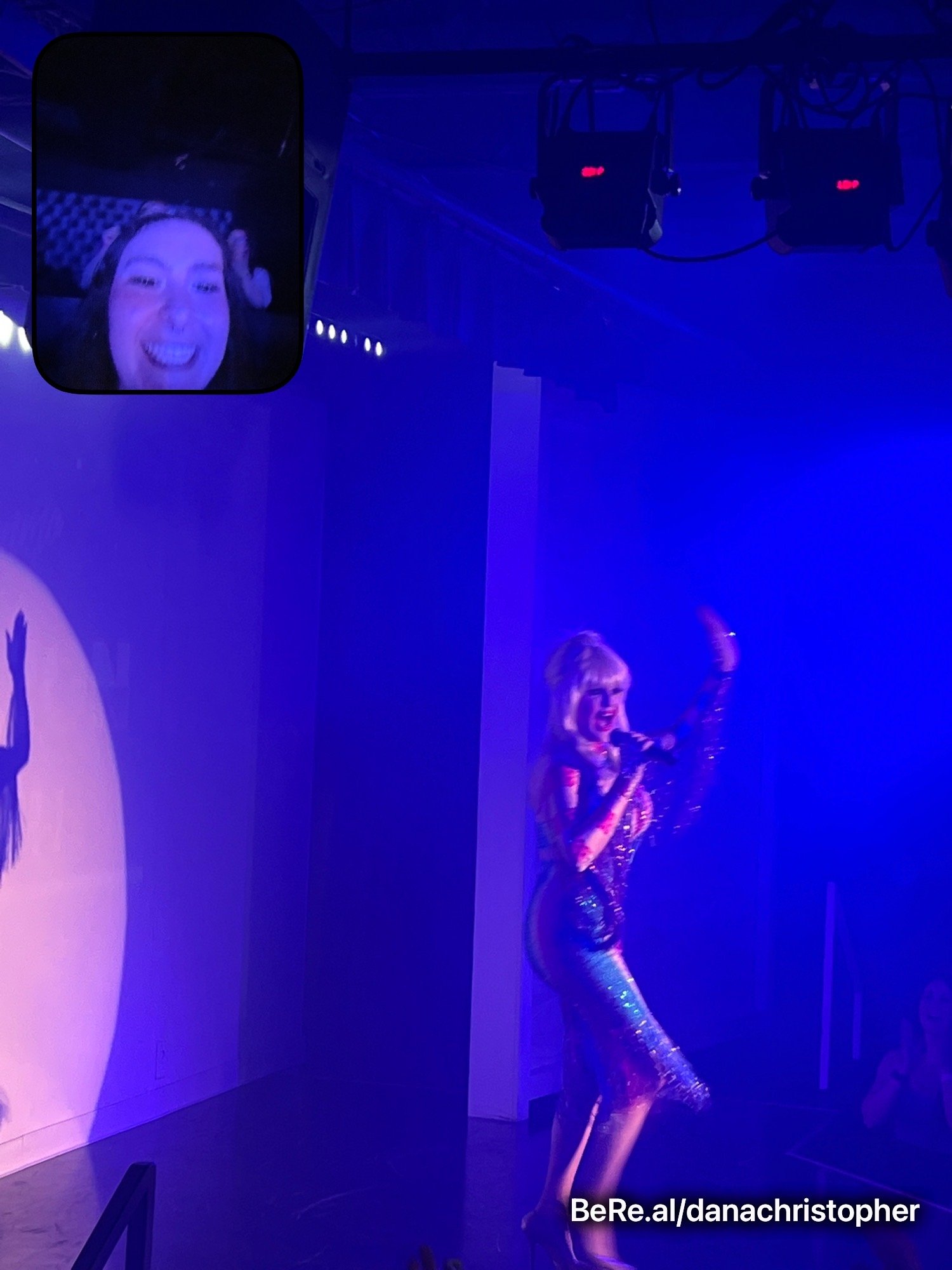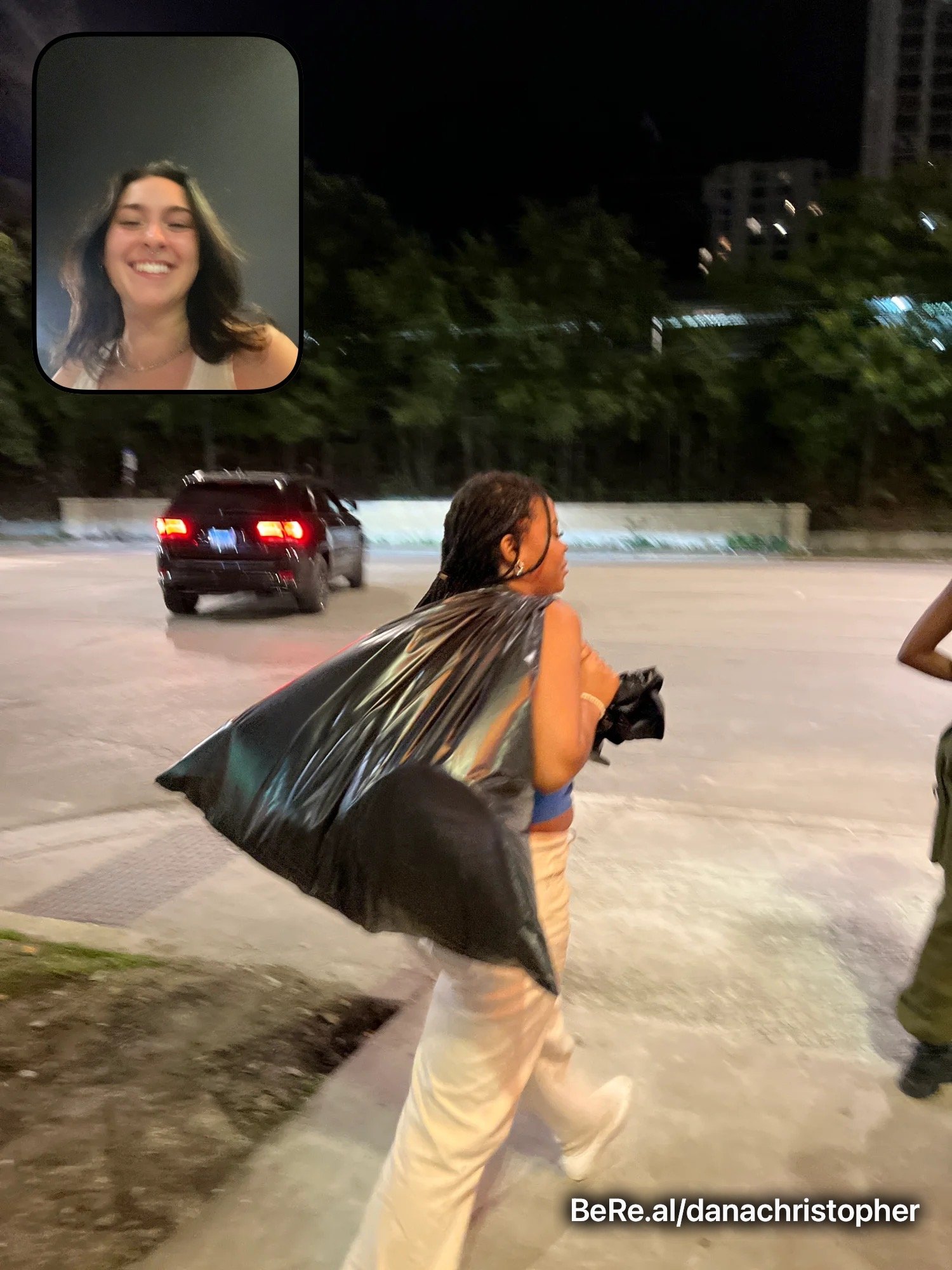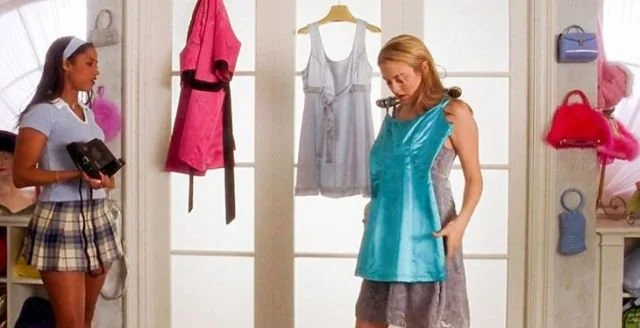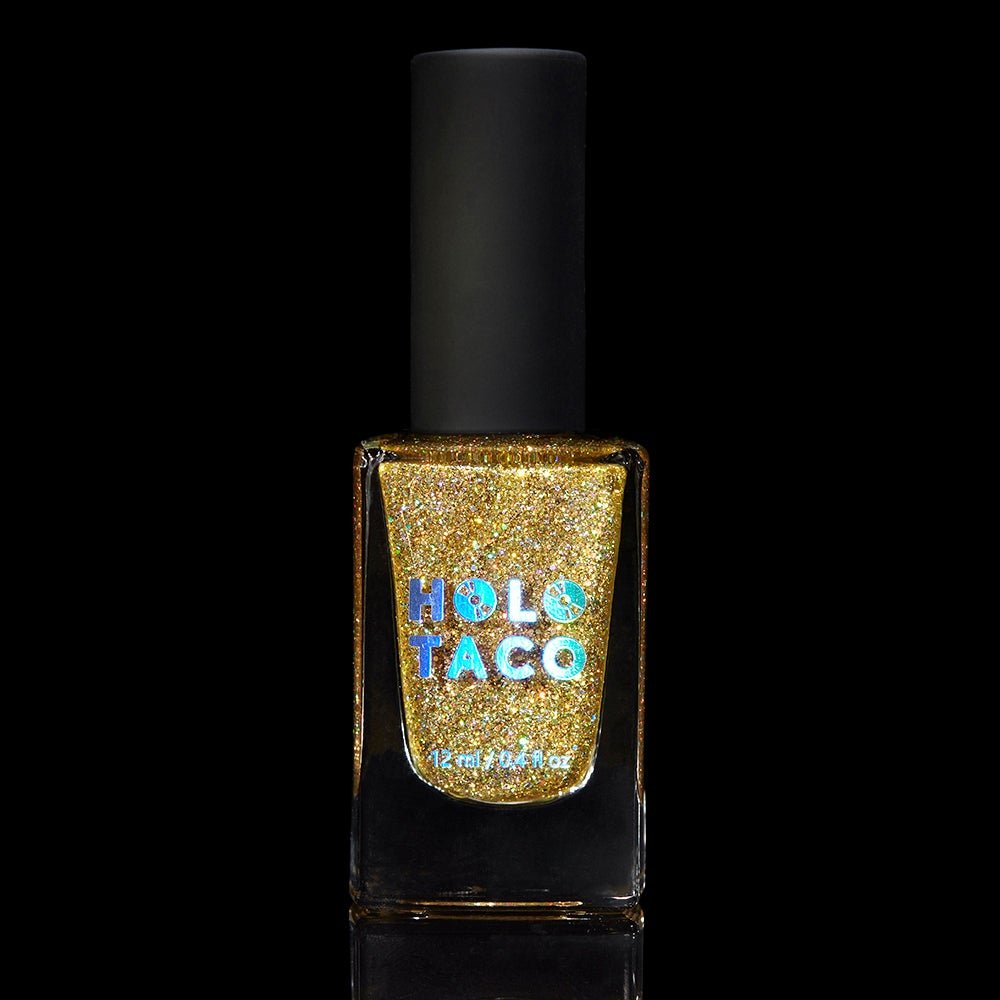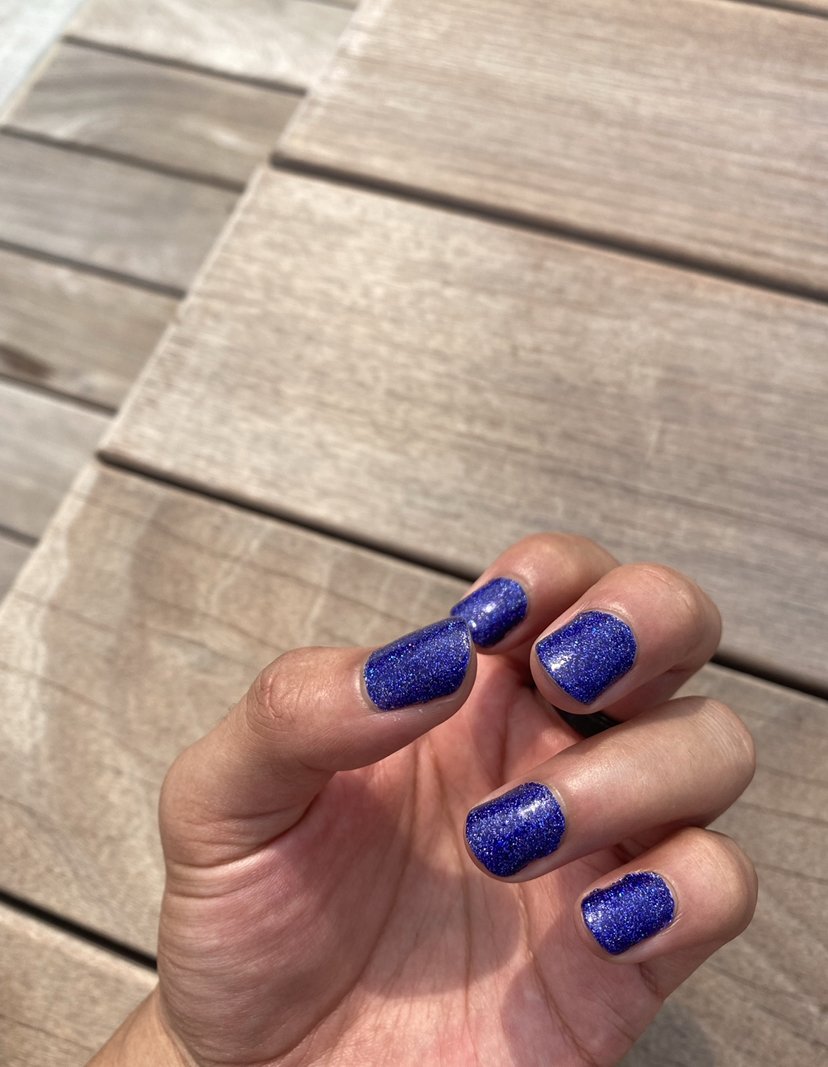Once, supermodels ruled the fashion industry—faces like Naomi Campbell and Cindy Crawford weren’t just runway stars, they were global icons. But today, their reign has faded, replaced by celebrities and influencers. So, what happened? And more importantly, can the supermodel make a comeback in the digital age? Exploring the rise, fall, and potential rebirth of fashion’s most iconic figures, this article delves into what it will take to bring back the era of the supermodel.
Read MoreBeing Nakedly Honest about Finstas
Instagram is a fake unrealistic entity, but I get a warm feeling inside when I can take control of my self-image and have an escape into the best version of myself. I love a nicely curated carousel of images. I love to show off the cool things that I’ve been up to. I love to craft an aesthetic collage on my feed. I will openly admit that I like the pressure, the rush, the frenzy when I post. The stakes and adrenaline are high but the reward in validation is even higher. Instagram is the most fraudulent form of media, and I love that. It's okay to want to feel good about yourself through the approval of others’ perceptions. Why do I need to be realistic for others’ viewing purposes? I agree that Instagram perpetuates this unrealistic culture where life is perfect and aesthetic, but why is that so bad?
Is it wrong to want to look my best and feel my best when I usually don’t? Is it wrong to want to be perceived in a way in which I have control over? Not trying to go all Ready Player One, but I indulge in the escape from reality, the craft of my own world. In any way the cookie’s going to crumble, Instagram will never be authentic, and that's the beauty of it.
BUT, I do appreciate futile attempts to imbue a sense of realness or authenticity into social media. As a chronic oversharer, I have to regulate what I am posting for 1,000+ people to see. Time and place :/. For many, including myself, finstas have become a therapeutic space where we can express our feelings in either the most cryptic or explicit ways. Finstas are the self-obsessive, sugary, trashy, colorful parts of life with a splash of the uneasy thoughts we conjure in our mind. Photos don’t need to match, people don’t need to look good, and the constant posting shouldn’t bother anyone.
### After the whole Moongate scandal last year with the forged Moon Journals and all (iykyk), I became inspired to make my own finsta @moonjounal. I thought I was clever because it's a play on my name… until I realized I spelt journal as “jounal.”
a curation of my finsta
As much as we want to broadcast ourselves as unfiltered and authentic through our finstas, we still create a particular self-image, truly causing a paradox between authenticity and curation. I don’t really do much on the day-to-day: I go to school, sit in the library, crashout in my room, and three-way call my mom and my sister. And when something remotely interesting happens, I say, “that’s good content for moonjounal.” (unfortunately for me and the rest of the world, i am not a content creator) Even though in reality, I am not hanging out with my friends, traveling, or going out every day and night, I still try to convince myself and others that my life is so romantic and interesting, but I’m also funny, so look at this meme that I laughed at:
@k3ntrellswife
Although, I have created this persona on my finsta “DJ Pom Pom,” who I think is fun, always having a good time, and unserious, she’s not an authentic version of myself. I sometimes look at her and I get envious, but then I’m like “girl, that’s me.” She’s like my Tyler Durden, starring in my own self-destructive Fight Club. I fear that my alter ego causes a tension between the performative and unfiltered. There is a spectrum of how much I want to reveal about myself, even with people I deem close to me. In this supposedly “private” space, I don’t think I come off as authentic or real, but to others this is the ultimate form of media intimacy. And anyone who gets to see my secret little space, should deem themselves lucky, for this is the closest they can view me. Finstas are a space where people can be “real” enough in front of a less judgmental and smaller crowd. The only parts of a finsta that should be censored are the sad, boring, lonely, moments. We have to remember that even in this niche space, no one gives a FUCK if you are sad. Nobody honestly cares if you just got heartbroken, you’re feeling sick, or if you find a flower really pretty. Or at least I don’t. I may be pessimistic and cynical, but I am honest. I want to see something fun, a secret, something I am not going to find anywhere else when I look at a finsta. Give me deep look into what people are up to, what they find funny, what CRAZY things they have in store. A raunchy, intimate, dirty lifestyle that everyone lusts after.
Social media is never going to be candid, so at least entertain me with something real enough.
Here’s a song that sums up how I view finstas:
In Place of Posting, The Girls are Writing
Spanning the localities of my friendships, from coast to coast, school to school, group to group, is one uniting feature: Substack. A couple, if not all, of the girls—myself included—in these disparate friend groups have a profile on this online literary social network platform, driven through personal newsletters. Instead of consistently sharing on Instagram, we share our writing. Though I have not done thorough interviews, I gather that the feeling is mutual among other girls at my elite university. In place of posting, the girls are writing.
I’m interested in delving into a specific type of online writing: the girlhood essay. This form, written by those identifying as a ‘girl,’ is an amorphous collection of coming-of-age, bildungsroman, slightly naive, and perhaps frothy pieces. The writer is typically in her twenties, living in a big city, perhaps attending (or having attended) a school like mine. The content is varied, with some dedicated to poetry, many with critiques of our chronically online lives, and even more that discuss what a “cool girl” life is. Lists have become a staple addition as well: lists of resolutions, of ins and outs, of dreams, of clothing brands, of favorite things, of Halloween costumes, of cafes. I am one of them, writing about my romantic epiphanies and conclusions on the grievous existence of a young woman today. The constant stream of this content is self-selected, yet I grumble about my feed being oversaturated by girlish complaints. Why? Because, like everything else in this, overproduction is making for a lower quality product, a process that gets exacerbated by the ever-demanding online content cycle.
Let me be clear: I am not adding to the unfortunate choir of those who criticize the endless girlhood conversation on this site, slamming authors for harking on this over-written subject, when it is just the natural progression of their lives and identities to be questioning things like girlish love, belonging, desire, style, sex, etc. Let the women speak (thank you Eliza McLamb for her Substack essay bitingly titled “We’re All Whores Here”). This being said, there is something afoot in terms of the over-romanticization and commodification of this internet-ified girlhood. Unlike a Jane Austen novel, a Substack entry is relatively short and easy to produce. The depth and melodrama are performative and not always genuine. In other words, too often the Substacker girl writes to say she wrote, immortalizing in words the same curated lifelessness that glares at us from our Instagram.
To unpack this conflict of superficiality a bit more, I turn to a Substack legend, the original “internet princess”: Rayne Fisher-Quann. To my anecdotal knowledge, she was instrumental in constructing this prima donna writer archetype. For good reason, too. Her writing is long, smart, and pulls from sources that cite powerhouses like Susan Sontag, Joan Didion, Mary McCarthy, Simone Weil, Hannah Arendt, and Diane Arbus. While she doesn’t harp on girlhood, the genre grounds her whole publication—take the titular word “princess” as evidence. She takes the sentiment of essaying seriously: she balances opinions, deconstructs her perspective, and offers well-thought-out advice. Not to mention, she’s a fantastic writer. The last line in one of her most popular articles, “no good alone,” showcases this: “... it’s painful and exhausting and fundamentally terrifying to rip yourself open and leave the guts at the mercy of the people you choose to love. But if I know anything, I know this: It’s better than being alone.” Her powerful imagery makes her bleeding heart not exhausting, but authentically relatable in a deeply human way—not relatability for influencing purposes. She’s tortured, because we all are, and pumps meaning into that connection.
Moving now to the other end of the spectrum, we have the weightless girlhood Substack. I’m not going to cite the exact page I am pulling from, but if you look up “list of hated things” and click on a page that looks girly-poppish, you will find something similar. The post, written without proper punctuation, begins with a brief intro outlining how “boring” the utopian fantasy of things like “radical optimism” and “eternal sunshine” is. To give her page some spunk, she is countering a previous post dedicated to her “list of perfect things” with one of the things she hates. A few of the last items on the list are the following: “...how tiny bikinis these days are (someone please send me a cute suit i can wear in front of my family i’ve been scolded for this one); the idea of skiing; the wellness industrial complex (just sleep and eat a vegetable); the anxiety of being late; my lack of knowledge about wine…” Immediately, I need some explanation. The idea of skiing? The wellness industrial complex? We know what she’s referring to, but she doesn’t walk us through any analytical process of determining her abhorrence. There is a place for silly, goofy writing. Even Rayne posts holiday gift guides (though she unpacks the practice of gift-giving in the process). Performative angst is fun! But is it productive? Is it teaching us to really essay, not just jot down ideas?
I am not out to squash someone's hobby. Many don’t have the hours it takes to write a proper analytical essay. As Eliza McLamb points out, we all have to sell ourselves out as artists. What I am out to do, however, is to urge people towards more thoroughness. To turn the platform into a place for growth, not just surface-level commiseration. Girlies, ask yourselves: Why are you Substacking? For an image? For a creative outlet? Just to be a part of the crowd of knit-wearing, lip gloss-smacking, book-naming, twitchy writer girls? Though brutal, my conjuring of that image points to the ritualistic nature of the platform. No Substack? No sitting at the tortured literary girls' lunch table. I agonize over not posting enough on Substack, over not being popular because of my words. Like any form of social media, the platform is as much a burden as it is a form of expression.
—
Blogs are nothing new, but the blog as social media is. Platforms like Substack can be a way forward to more constructive and thoughtful media consumption, as long as we consciously steer away from the same over-aestheticized trend traps. Writing, to me at least, is sacred and, like any art form, takes time and dedication. Though I’m thrilled to see the girlies encouraging others to write more, let's make sure the writing we’re encouraging isn't sacrificing quality and/or only feeding the image. We all want to be an internet princess, but that title needs to be earned—and cherished.
Cover image via (ft. Carrie Bradshaw, the OG writer girlie)
Nara Smith and the Return to Conservatism
Although many were shocked and disappointed by the election of Donald J. Trump to be the 47th President of The United States, this win might’ve been written on the walls— the walls of TikTok that is.
As TikTok begins to further influence the cultural zeitgeist, the mapping of fashion and wellness from the years before the election could have signaled trouble for the democratic campaign much earlier than November 5th.
The arguably most popular TikTok trend of this year has been the fashion and lifestyle of tradwives (short for traditional wives), popularized mostly by model and homemaker, Nara Smith.
When Nara Smith– and by extension, her husband Lucky Blue Smith– entered the TikTok sphere, many including myself were enamored by the simultaneous glitz and down to earth quality she portrayed in her videos, most of them in which she makes food “from scratch” for her children and husband while donning thousand dollar gowns and accessories. But after the shocking results of the 2024 election and somewhat less shocking but equally concerning exit poll data, I fear that political analysts and the general population alike, while absorbed in the mania that was Kamala HQ and Brat summer, ignored a key factor in predicting how young people, specifically Gen Z, would vote: the rising popularity of Nara Smith, traditionalist fashion trends, and therefore the rising popularity of conservative values.
On the surface, there is nothing wrong with the slick backs, Ralph Lauren sweaters, and little lady jackets that have resurfaced in the closets of young people in America. What is concerning, however, are the hyper feminine ideals that hide in the pockets and zip closures of this type of dress.
In a TikTok from Elysia Berman, she says, “These hyper- feminine ideals— a lot of it is about conformity.” Berman also comments on the loss of individuality when it comes to self expression through personal style, calling it “an act of resistance” to simply exist in a context that favors the traditional image of what a woman is and how she should present herself in the world.
Within the style microtrends “coquette,” “old money,” and “quiet luxury,” there is a story that wants to be told, and the same goes for general trends seen in magazines and runway shows. It is up to the person wearing the clothes to say whether that story is one depicting resistance, one of personal evolution, or one that says you’re simply too exhausted to pick an outfit.
Looking at the face of this fashion “movement”, the only issue with Nara Smith’s content is the unrealistic “quiet luxury” lifestyle that she sells to unknowing viewers. It’s the facade of a perfect household in which housework and domestic labor don’t affect her, the children wait hours for a bowl of cereal, and her husband is simply happy to be there, but underneath this picture that she paints is the full belief in the values and structures stitched into the fabric of her Gucci gown. This is the very reason that fashion is, and has always been, political.
A Quiet Revolution in Individuality: The Emma Chamberlain Effect
As I rummaged through my closet the other day, buried in the farthest reaches, my eyes fell upon an ancient relic: my brown, reversible teddy jacket. Instantaneously, I was back in 8th grade, when this comfy item was the ultimate must-have. What’s wild is that I can still remember exactly why I bought it—I was obsessed, like every other girl my age, with Emma Chamberlain.
It is undeniable that Emma Chamberlain has become more than just an influencer. Her rise to fame, sparked by candid and quirky YouTube videos, struck a chord with young girls in a way few others could. Whether ranking fast food items or showcasing thrifted finds, Emma exuded an undeniable authenticity that made even the most mundane content feel magnetic. It’s no stretch to say that Emma wasn’t just relatable—she was revolutionary
Looking back at that teddy jacket now, it feels like a symbol of an era. In 2017-2019, Emma’s style was the blueprint for a generation. White platform Doc Martens, mom jeans, scrunchies, and, of course, the teddy jacket were all the rage, having me and teenage girls everywhere in a chokehold. Emma’s fashion choices weren’t just admired, they were accessible. She made fashion feel fun and achievable, separating herself from the intimidating status-driven influencers of the past and serving as an entry point into the world of fashion for much of her audience.
Fast forward to today, Emma’s fashion influence prevails. Enter the “eclectic grandpa” aesthetic: a careful mix of vintage-inspired and modern pieces that feel both preppy and casual, polished yet eccentric. Think loafers, a pair of Adidas sneakers (Sambas, Campuses, Spezials, etc.) oversized sweaters, and button-ups. Emma was originally championing this look 1-2 years ago, but since then, it has completely taken over in late 2023 and a large part of 2024. The rise of “old money” fashion—a blend of understated luxury and timeless staples—owes much to her ahead-of-the-curve sensibilities.
As 2024 draws to a close, Emma gave us one more iconic moment: a wardrobe tour video. In it, she showcased her closet after getting rid of all unwanted and unused clothes, highlighting her process of curating timeless, high-quality pieces. Her current aesthetic revolves around neutral colors—primarily black and white—and a seamless blend of elegance and comfort.
As always, Emma’s style ignited conversation on social media. Some people criticized her new looks as boring or unrecognizable, but to those critics, I say: you’re missing the point.
In the video, Emma emphasized prioritizing individuality over conformity. Her wardrobe was never meant to impress but rather express.
Emma’s focus on personal style over trend-chasing feels like a hopeful glimpse into the future. I believe 2025 could be the year of the death of microtrends, with Emma leading the charge toward a fashion landscape where unique, personal style reigns supreme.
In a recent New York Times article, Emma spoke about stepping back from social media to focus on her other passions and businesses. This transition feels almost symbolic—like a sign that Gen-Z is moving away from fast-paced, performative content toward something far more intentional and deeply personal.
Her legacy is clear: Emma Chamberlain has shown us that authenticity is timeless. She taught us to embrace our quirks, mix and match with confidence, and most importantly, to be unapologetically ourselves. So as I place my once-beloved teddy jacket into a goodwill bin, I feel an odd sense of gratitude. I’m reminded that trends fade, but true style—like Emma’s influence–is forever.
Featured image via
Man Made Horrors Beyond My Comprehension: The Apple Vision Pro
21.2 ounces, $3500, 256 gigabytes. Meet the Apple Vision Pro, a state of the art augmented reality device tailored to your every need. Seemingly straight from a sci-fi film, you simply don the headset and wave your hands to access immersive photos, play games, and escape within virtual landscapes. Its possibilities feel endless (much like the price tag)! In an age where technology has advanced to allow us such commodities, what isn’t there to love?
Image via
Well, the utopia-white goggles feel quite the opposite. The generous folks at Apple offer free in-store demonstrations of the device, and after taking a spin myself I must say it was the most beautiful nightmare I’ve ever had. Indubitably impeccable, I found myself far from the Chicago store on Michigan Avenue and on a 30 minute joyride through cyberspace. Following the experience I found myself within a state of reflection, squinting at the sunlight as I readjusted to the real world. I wonder, in the wake of perpetual threats made to creativity, AI creations, the looming dread of assured destruction in a world war through man-made weapons, and now the Apple Vision Pro— when is development in a field enough? While there are undoubtedly benefits to the product, I feel as though they were overshot in the interest of filling the space up with more features, and this presents a new future fear: that of film.
Towards the end of the demonstration I was shown a trailer for The Super Mario Bros. Movie. The characters danced across the screen of my personal theater, precisely where my cinephiliac dread broke through the immersion. Let’s take a step back to a time when movies primarily belonged to the big screen. There was something about the theatrical experience that beat an at-home watch, from the proper showcase of filmmaking to warm popcorn and a cold drink. Of course, COVID put a dent on things. With mass lockdowns movies faced delays, cancellations, and people began to switch to streaming. A prime example of this necessary adaptability came in the Summer of 2021 with the Fear Street trilogy: “after initially being intended for a unique three-month theatrical rollout, Fear Street’s release on Netflix essentially amounts to a three-week streaming event for a trio of feature-length films made on a major studio budget” (Surrey). A complex tradeoff was present, where the films still saw the light of day though on a smaller scale than originally intended in semi-isolation.
Image via
Following the decline of the pandemic and return to “normality,” Nope arrived in theaters with a technical twist: “Nope marked the first time the Imax format had been used for the horror genre, and Markoe says Peele understood how to use it creatively” (Tangcay). Here, development worked hand in hand with creative intent, resulting in the show stopping spectacle the film had intended to be for its audience. Yet 2 years later it seems as though the sentiment has regressed with the Apple Vision Pro. Impressive as it is, the film screening feature is a direct attack on the theatrical experience. Its convenience and experience render a trip to the cinema useless. The creativity involved in the Imax shooting of Nope would be for nothing if the theater didn’t have an audience. With that, what does the future of filmmaking and consumption look like?
Image via
Return to the dystopian nightmare. While nothing is for certain past the present and the product’s price tag may prevent it becoming a common commodity, the possibility for such a case is present. Would it result in another hit on the theater business? Could it sustain such a hit only a few years after COVID? Will the theatrical experience be lost to time? Is the future of filmmaking for a smaller screen than ever before?
Cover image via
Coquette Core & Hyperfemininity
If you’re like me and have the unfortunate tendency to be chronically online, you’re more than familiar with Coquette Core and the slew of newly coined ‘girly’ aesthetics i.e. the strawberry girl, tomato girl, blueberry girl, cinnamon girl, vanilla girl, hot girl (shout out Megan Thee Stallion), rat girl ( I don't know what this one means either), clean girl, soft girl… and I think that about covers it?
Though I do not tend to fit easily into archetypes, except for my Art Hoe phase back in High School (I regret nothing)—the recent emergence of Coquette Core is one I’ve found to be somewhat fun & refreshing.
Taking inspiration from ballet culture, the romantic period, and media’s favorite femme fatales, the Coquette Core aesthetic is characterized by a playful, charismatic, and “flirty” attitude (this is pretty much its most agreed upon definition according to Who What Wear ). Those invested in the aesthetic tend to adopt feminine silhouettes, lots of lace, tulle/ sheer fabrics, pearls, and ribbons as a staple.
Essentially, if you’re a Simone Rocha, Sandy Liang, Miu Miu, or Margiela enthusiast, you’re likely already well-versed in all this.
Though by no means perfect (it has its flaws) Coquette Core first piqued my interest because it aimed to be a ‘reclamation’ of femininity — a means to find strength in the disparaged and power in the frills where the patriarchy found frailty. Lately, however, I’ve become much more fascinated with the fact that despite foregrounding traditional femininity, Coquette Core has somehow managed to evolve into a lighthearted trend on social media, where people, regardless of identity, participate in the “girly” aesthetic.
Renee Rap’s Instagram Story December 20th, 2023
@veryharryhill on X December 19, 2023
The tweets and memes pictured above have by far been some of my favorite examples of Coquette Core’s cultural expansion. As a black girl, seeing other women of my complexion take on the style has also brought me lots of joy while simultaneously causing some feelings of instability with femininity to resurface.
In a lot of ways, I’d like to think that the true insidiousness of racism is the unobserved mode by which it successfully prevents black people from self-expression, fragmenting our identities in their very early stages.
At a very young age, as a little black girl, I learned that the soft traditional femininity that Coquette Core exemplifies wasn’t available to me in the same way that it was for other girls. Notably those fairer than I. I could dress the part of a “girl” and have the “toys” and “girly interests,” yet there was something about me—my features, my hair, and my complexion—that became a crippling reminder that I was once again an other. For black girls and women alike, dark-skinned ones especially, being robbed of femininity is one way that white supremacy strives to dehumanize us.
Truth is, though I may have loved the bows and barrettes my mom put in my hair as a kid and the frilly socks and mary-janes in which she dressed me— words like dainty, graceful, delicate, and pretty still felt out of reach. With time, I came to understand that my identity as a black woman is and has always been socially tethered to masculinity as opposed to feminity due to adopted white supremacist beliefs. It is difficult to identify a point in American history when black women were not relegated to stereotypical ‘male’ roles and overly criticized for possessing “unattractive” domineering male behaviors. It often feels that to be perceived as feminine, we have to occupy extremes, oversexualizing, overextending, and overperforming. Otherwise, we relinquish our femininity altogether.
That’s all to say that part of the reason I think I enjoyed the Art Hoe aesthetic so much in high school (before it got co-opted by a much larger & whiter demographic) was because it allowed black girls to be seen in a way that social media, let alone the real-world, had never before. As clichéd as it may sound, we could be expressive, artistic, awkward, goofy, cute, and quirky, superimposing ourselves into European impressionist paintings to physically make and take up space. Suddenly, it seemed like femininity wasn’t something I needed to labor for. I was no longer making desperate attempts to cling to or mend my bastardized ‘womanhood.’
As a teenage girl, still unsure of herself and her changing body, who had only begun to deal with the heft of perception (that damming concept), embodying the Art Hoe made me feel I could enjoy my black girlhood in ways that I had felt so isolated from beforehand.
So, how exactly does this all relate to Coquette Core?
Although fashion and beauty trends should NOT solely define girlhood—that view is overly simplistic and reductive—these trends are still vital for self-expression.
Don't get me wrong, I too found it a bit jarring that I enjoyed an aesthetic that draws from industries like ballet, which have lengthy histories of being palpably white, harsh, and exclusive. However, in light of its flaws, it's clear that coquette core has opened up a space on social media for us to participate in progressive discourse on race, sex, gender, and sexuality.
While there are so many thoughts left to flesh out, I can confidently say that this era within which Coquette Core and other hyper-feminine aesthetics are evolving has at least confirmed for me that my femininity is deeply bound to my personhood in ways that I am still trying to decipher.
Coquette core and other hyper-feminine aesthetics have also reminded me of the importance of having an outlet—such as style—to navigate the complexities of defining oneself, especially at a young age. Karon Davis’ exhibition at Salon 94, "Beauty Must Suffer," a photo from which you will find as the cover for this article, is the most beautiful representation of how I’ve begun to think about Coquette Core, blackness, and femininity: her work both affirms delicate black femininity while demonstrating the onerous labor it takes to cultivate it in the first place.
Some readers may think I have been too generous to Coquette Core, and that may be true. However, I want to clarify that this article is not intended to gloss over the aesthetic’s shortcomings. Like all fashion trends, Coquette Core needs to become more inclusive on all fronts.
I guess I decided to write this article because I believe that Coquette Core when emulated by those of us who feel like an other, goes deeper than just a shallow, one-dimensional approach to femininity. After all, no one works harder than a black ballerina. I’m sure Misty Copeland would agree.
Cover photo from ‘Karon Davis: Beauty Must Suffer’ @ Salon 94
invisible threads
Green was the color of the grass
Where I used to read at
Centennial Park
I used to think I would meet someone there
Teal was the color of your shirt
When you were sixteen at the yogurt shop
You used to work at to make a little money
Time, curious time
Gave me no compasses, gave me no signs
Were there clues I didn’t see?
And isn’t it just so pretty to think
All along there was some
Invisible string
Tying you to me?
Bad was the blood of the song in the cab
On your first trip to LA
You ate at my favorite spot for dinner
Bold was the waitress on our three-year trip
Getting lunch down by the Lakes
She said I looked like an American singer
invisible string, Taylor Swift, 2020.
You’re probably familiar with this track (and if not, please for the love of everything go listen to it!), and the premise behind it. And if you’re not, hopefully you just read the lyrics, but if you didn’t, Miss Swift is essentially singing about an “invisible string” that binds her with the subject of the song. Going back, she can identify experiences that connected them, even before they had met. This song has inspired a trend on TikTok right now as a derivative of what’s being described as “invisible string theory”, where people have been highlighting instances in which someone close to them in their life has had an experience that reflected some aspect of their own lives, or were literally in the same place, prior to when they met in the context of their current relationship. In simpler terms, the universe will keep you apart at all costs until you are meant to meet. For instance:
Per usual, the general trend provides a gross lack of awareness or credit to where the “theory” actually originates from. Rebranded as the invisible string theory, the red thread of fate (or the red string of fate, depending on where you are) is a story prevalent in East Asian mythologies that describes a physical connection that exists between two people destined to meet, fortified by an invisible, red thread. The thread may be tangled, stretched, twisted, or mangled, but the connection will always exist. The details (whether the thread is tied to a pinky finger or an ankle, etc.) is regionally dependent, but the core of the tale remains the same. You and your soulmate(s) are connected, right now. They could be walking around, right next to you, completely unaware of your significance. And you, of theirs. You could cross paths, at any moment, without even realizing it. You are not meant to meet yet.
It’s a concept that has compelled me since I was first introduced to it– and, in accordance with the videos under the trend in tandem with my own experiences, I believe it. Maybe the thread isn’t physical, or red, or perhaps there is no thread at all— but I do think that we share unbreakable, metaphysical connections with specific people throughout our lives, and that the people we are meant to know are meant to know us.
Funnily enough, someone very close to me in my life thinks all of this is bullshit (he tends to be cynical about things like this, concepts that are considered “spiritual”). He asked me why it mattered– what is the consequence of this mythological tale, this theory, being true? Or false, for that matter? And to be honest, I didn’t really have an answer. But I also don’t think it’s that black and white– just because its truth doesn’t “matter” on a universal level, doesn’t make it irrelevant, or totally insignificant, either.
At this point in life, there’s a lot of talk about the future, about what comes next. It’s a lot of new experiences, and a lot of change. You move away from familiarity to somewhere completely foreign, in the spirit of this great new chapter (you’re in your prime!) and have to construct your own life from the ground up for the first, but probably not the last, time. And with that comes excitement, yes. But also discomfort, and difficulty (with many things– do I wash these sheets on hot or cold? What actually is business casual?). I am not one to invite change with open arms. I can accept it yes, but the process isn’t something I enjoy. It feels unstable, unpredictable. It is out of my control, and that makes me uncomfortable.
So, when things seem especially unsure, I revert back to what’s familiar:
The sound of ocean waves crashing against a jutting cliff, the taste of rice and salt. Warm Vanilla Sugar, cardamom and cinnamon and kidney beans, fragrant, boiling on the stove, the dissonant sounds of a rehearsing pianist. Coffee in the morning, ginger in the evening, and lemons for the in-betweens. Distinct but distant chatter coming from the room down the hall, a shelf of art packed full, spilling over, shattering. A brush of fur against an ankle, oily hair and a kiss on the head, gentle fingers on backs and warm water on feet.
What brings me the most comfort though, perhaps, is the familiarity, the consistency, of people. My family, my friends. Regardless of what happens, there are a select bunch of people that I know are not going anywhere. And, according to the mythology, there is something innate, something subconscious, that will bind us together regardless of circumstance, and regardless of distance— unbreakable, metaphysical connections. And, perhaps even more intriguing, there are people that will be important to me, just walking around somewhere. Connections that will inevitably be forged, just waiting for the right moment. It’s a nice thought. Cheesy maybe, but nice. Comforting, in an age of change.
So for me, that’s why it matters— comfort. I think it’s just nice to think about the people in my life as a part of a makeshift web that follows me, present and connected. Just a single thread’s tug away, whenever I may need them, or they may need me. It’s also just interesting to think about when you truly met someone for the first time.
For example, the other day I had a friend over for dinner.
We had only met about four, maybe five months prior— I had never heard of her, and could not recall ever having seen her around before we had initially met. It was during a school program, of course, where all great relationships originate. We were eating shrimp pasta and sipping red wine, talking about our interests, our ambitions. She said she was a screenwriter. I tell her I am an artistic director, a producer, an editor. I ask her if she’s worked with the school’s film organization. She smiles. She says yes.
We realized that we had sat right next to each other— her right behind me— for six separate club meetings and a premiere over a year and a half prior. And this wasn’t some massive consulting club. We had definitely bumped into each other at those meetings, but one had just never perceived the other. Us connecting during that program was the unification of our thread. We were finally meant to meet.
In a way, this myth is just another way to say: “small world”, or even “everything happens for a reason”. That the people in your life are there for a purpose, coming and going as they are meant to in order to serve you best throughout the grand span of your lifetime. It kind of circles back to the idea that you are a “mosaic” of everyone you have ever met:
Your childhood best friend you always mimicked, whose favorite color is still yours. The permanent scar on your knee from when your family friends taught you to skateboard; they got divorced and moved away soon after, you haven’t spoken to them since. Despite being twenty years old you still tie your shoes the way your kindergarten teacher taught you— two bunny ears, wrapping around each other each other in a dance, into a bow. Using semicolons more often than you should, because your sixth grade English teacher loved them, and you loved her.
While the traditional mythology is typically associated with romantic soulmates, I like to think it extends past this. All of the people you have met and have stayed, did so for a reason— they all share an invisible thread with you, and you with them.
Anyways, regardless of the theory’s, the myth’s, validity, I encourage you to take a look at your own little *web of important people* in your life. Because you never know where your invisible strings, or red threads, may connect.
SHOOT CREDITS, AND SPECIAL THANKS TO:
Models: Sara Vetter + Arianna Wooten
Creative Direction & Photography: Riya Khetarpal + Spencer O’Brien
Styling, Editing, & Collaging: Riya Khetarpal
All images are courtesy of the author
Love & Other Drugs
I’m not sure why there’s such a thing as being unlucky in love. I think I've sought after it, cried— taken hiatus after hiatus to “cleanse my palette,” if you will (*eye roll*, I know), and then come back ready each time to face the dating pool head-on. A routine that has, ironically enough, always proven unfortunate to my dismay.
As a teenager, I think you often get the brunt of insults accusing you of being too “naive,” too “fast,” too “immature” blah blah blah… when it comes to love. As if your age strips you of all credibility.
Although, I don't expect to know all the answers at nineteen. I'm not bell hooks— I can't even pretend to know, All About Love.
However, I have seen other people my age get it right. Be on the same page, reading from the same book. Hence why, upon this realization, I ask myself: Why can’t I? It’s not like I haven’t given it my best. The next statement may come across as a bit bitter or maybe even a little desperate; but, GODDAMN have I tried! And the more I do, the more I hate how it makes me feel. It seems that the only source of clarity I've earned while going down this dark, long, miserable tunnel has been that:
Love is in fact NOT like other drugs.
Close-Up (1990) dir. Abbas Kiarostami
For one, I don’t get that dopamine rush every time I'm pursued. On the rare occasion I do, it’s too fleeting to really put me at a high. Whenever a new romantic interest presents itself, I can’t help but think, “here we go again.” Making sure to hold my breath during the dive, and lord knows I can’t swim. I do all the things you are supposed to do. I talk, text, go on these little dates— we kiss, and if we even make it that far… maybe even…
Then what?
Well, usually they’ll go, “I don't think it's gonna work out…,” followed by a list of reasons. I listen diligently, taking in what they have to say, and for the sake of ending it on a good note, willfully agree, and that's that. It's over. I can breathe again.
The bad part comes next. I’m aware I have an attachment problem. I cling to people like a baby grips. Just like the palmar’s grasp, my clinging too, is an involuntary neurological reflex. If you believe in that sort of thing, attachment theory has suggested that I have a “disorganized fearful-avoidant” attachment style. A manifestation of both anxious and avoidant attachment habits. So, I guess it makes sense that my post-ending-it ritual consists of an overwhelming wave of self-doubt, self-pity, and self-loathing — essentially a shedding of all the things I may have once liked about myself.
Don’t worry I usually get them all back.
But, during this stage, I’m suddenly whining about God knows what, measuring myself up, questioning whether I’m deserving or even worth someone’s time and commitment. To some extent, I do that too during the pursuit. But, it’s somehow far worse during the after. I adopt this unhealthy practice of placating my feelings, hoping that if I do so long enough I’ll eventually forget them (it's not very full-proof, I never do). Then, I spend a period (the length fluctuates based on how much I liked them) strongly disliking myself for allowing them to have had even just a sliver of me. And the minute I think that it’s over and I’m all recovered, there I am once more, stuck—disliking myself more for wanting to do the entire thing over again with someone new.
But why?
Why would someone sane want to torture themselves in this way? And contrary to prior implications, I’m no masochist.
I’m sure with everything I just told you, you probably read that back and thought: well, then maybe it’s because… you’re not all that sane? But stay with me, I promise I have a point to make here.
Here’s what I think: people like me, though yes, we struggle to keep ourselves afloat, knowing we’ll have to laborously put ourselves back together after we let others in and it doesn’t pan out; still, all share the small faith that one of these days, it will ring true that love is the superior drug. The supreme if you will (yes this was an AHS reference).
Better than any substance I could take in. I do not care how potent.
Better than anything that could provide me with any semblance of real joy.
Maybe, love is NOT like other drugs because love is perpetual; in all its formats. It might just be the hopeless romantic in me talking, but whereas Like is ephemeral, with feelings fading as quickly as they came, Love lasts. And sure, though I think the memory that you once loved someone may vanish. After all, “It’ll pass,” was the Priest’s response to Fleabag shortly after she confessed her Love for him. When it comes to the feeling, Love as an emotion— I’m not sure you ever stop loving someone you truly Loved, in that sense. Romantically or otherwise. No matter the circumstances. And as to why we accept the torture. To that, I'll say: love may take a lot out, but strangely enough I think it also helps us feel less empty. It’s why we crave it. Even though that desire may seem somewhat greedy and selfish, I think it’s only human to want a little bit for myself. Not to mention, as an added bonus, my romances have helped me meet a lot of pretty dope people along the way.
So, no matter how hard it may be to find or how grueling the aftermath-ritual, as of now, I’m committed to the craft. Now, whether that is subject to change in the future is a different story.
‘Cause, when it comes to “love & other drugs.” Love is by far my drug of choice.
Nikita Gill, from Great Goddesses: Life Lessons from Myths and Monsters.
With that I wish you a very happy and love filled Valentine’s Day — Liz
A Completely Biased Account of What You Are Like Based on Where You Study in the Reg
In honor of midterms, I thought I would present my extensively researched, peer reviewed, 100% accurate characterizations of people at the Reg based on where they like to study. My credentials are that I have worked at the Reg for four years and I’ve seen too much… far too much.
B Level
You’re weird, you’re a weirdo. I mean you have to be to enjoy the cold, windowless, low ceilinged basement that is the B-level. You’re serious… maybe too serious. I have no doubt you have a sleeping bag stuffed under the desk, and at night you climb between the non automated shelves for a brief 20 min nap before returning back to work. You would kill someone before they take your favorite spot and while I respect it, you deeply, deeply disturb me. What you need is a break, a melatonin gummy, a night in your own bed, and a life.
A Level
Let’s be honest with ourselves, you're only there during midterms and finals. You know the best time to be in the Reg is when you absolutely have to be in the Reg. You’re gonna ace your exams; I believe in you. One day you will figure out how to properly use a whiteboard eraser but today is not that day. What you need is an expo marker, a study group, and a really hot TA.
1st Floor
You’re there for a good time— sometimes also a long time. There’s nothing on your mind and for that reason you are the freest of us all. Are you going to get yourself a treat from Ex lib every 20 minutes? Absolutely! Chatting is exhausting work. You probably get things done, sometimes, but that's not what you’re here for. What you need is another Ex lib iced chai latte, a comfy chair, and a random person you met in SOSC 3 years ago to walk through the door so you can have an hour long conversation catching up.
2nd Floor
You belong on the 1st floor but you tell yourself you don’t. You will whisper to your friend for 2 hours instead of just going downstairs. I admire your cognitive dissonance. Instead of accepting who you are or changing yourself to be who you want, you tell yourself you are exactly who you want to become. You accept no criticism and commit yourself not to being smart but to expertly projecting intelligence. You make shit like this:
which is great but have you tried… I don’t know doing your work. What you need is to take the elevator down one floor, you will be happier for it.
3rd Floor
You’re a gentle soul, a lover of people, art, and literature. You attempt to be neutral because you deeply desire to be liked by everyone. No worries, I like you! You want to try your best and sometimes your best isn’t enough but it usually is. What you need is a hug, a date night to the Art Institute, and me. I will love you right ;)
4th Floor
You’re an enigma. Are you actually doing work or just pulling out 20 random books to lay on your desk? The world may never know. Sometimes I walk by and see you furiously typing your 60 page thesis but other times you’re on uquiz trying to find out if you're a slut, loser, or princess. Spoiler Alert: you’re the loser. That’s okay though because you will finish that thesis just after a brief 4 hour tiktok break. What you need is… actually I don’t know what you need but I’m sure you’ll figure it out.
5th floor
You’re a little elitist but only because you are better than everyone. You’re fashionable, sexy, rich, glamorous, and smart. What don’t you have? You like to feel like you’re on top of the world, I guess the top of the Reg is close enough. You’re one of those people who doesn’t move out of the way when other people are walking toward you. As a matter of fact, you trip them then step on them. It seems cruel but they have just learned the important life lesson of what happens when people get in your way. What you need is a little cushion to rest your feet, a back massage, and for the Reg windows to be washed so you can get a crisper view of the quad.
(Not Feeling My) Best Dressed
There is a stunning paradox in what I perceive to be American fashion culture.
Image via
American fashion culture, which I will use to refer to the broad attitudes towards fashion and getting dressed in the United States, is a world of comfort in the every day. Something that has become very visible through the recent shift towards more relaxed workplace attire, our current obsession with sneakers, Birkenstocks, and Uggs, and the messy bun being a go-to hairstyle for teens, moms, and everyone in between. People from other countries often joke about how you can tell if someone is American and it’s always because they are wearing workout clothes or sneakers even if they are not going to the gym. I myself certainly enjoy dressing for comfort while still looking cute, which is evident in how much I love wearing Nap Dresses.
Image via
The paradox, however, comes into play in how we are also a fashion culture that is very preoccupied with appearances. Plastic surgery and cosmetics are two large industries in the United States. Everyone is trying to keep up with the Joneses. For instance, despite its insane price, the Dyson Air Wrap has become a wishlist item for many. Even though we are a culture that claims to value comfort, we are also a culture that still is very much fixated on appearances. To make sense of it: being comfortable should not mean looking overly comfortable.
This paradox is where I would like to start this article. We exist in a state of limbo; but, it can become challenging during periods where we really do just need to be comfortable. And I am not talking about going to the gym without makeup or wearing snow boots that while warm, are not exactly cute. What I am talking about are our mental health episodes. Moments, when everything just feels like too much, and the thought of having to brush your hair, let alone put on even a little bit of makeup, is so overwhelming that you want to cry. I am talking about days where you are just so exhausted from lack of sleep, whether it be due to anxiety or a particularly bad flare-up, that you just want to stay in bed a little longer; but, alas, you have to go to class and just want to be comfortable.
Image via
Something that I find myself struggling with as someone who loves putting on makeup and doing her hair and wearing cute outfits is how on these bad days, I feel self-conscious and insecure about not being “put together”. Logically, I know that no one cares about what I wear to class, since we’re here to get an education, not to judge what the person across from us is wearing or not wearing; yet, this pressure to look good and “put together” at all times just becomes overwhelming. I feel ashamed even, for not just sucking it up and putting on some makeup anyway, since I should try and make myself look “presentable” and not “lazy.” The crazy part is that I don’t even feel this way towards other people nor was I raised in a household focused on experiences; it was what was in your heads that really mattered. Furthermore, as my friends will point out to me, it is not as if I am wearing pajamas and a hoodie with holes and stains to class, I’m just wearing flared yoga pants and no makeup, which is something that other people wear to class too. Simply put: it’s not that deep.
Image via
Fashion and makeup for me are things that do and should bring joy, rather than feel like a chore at the best, and a mask to hide ourselves from the world at the worst. This is really more of a thoughts dump and rambling than an article, but the point is that although I cannot speak for everyone, I know that at least statistically speaking, there has to be at least a few other people who have experienced similar emotions, and what I really want is for us to be kinder to ourselves and allow ourselves the grace to not always be “put together.” Sometimes just getting up and going to class is enough.
Cover photo Via
I Quit! My Advice for the Winter Quarter Blues
So I’ve gotten myself into a bit of a pickle. I decided to fill up my winter quarter schedule absolutely to the brim with classes, a research assistant position, and my few RSOs. My reasoning: winter quarter is filled with seasonal depression so, I might as well ride the wave and make myself extra busy now to allow for a freeing spring. Well, easier said than done. Why is it that I feel I need to fill up my time being productive to stave off the cold, miserableness of winter quarter? After polling my friends, it seems like this heightened winter workload is a common occurrence; our winter quarters are notorious for being busy. So we have this situation. We can do little to get ourselves out of it—I could drop out and quit my job, however that seems rash—but we can find ways to deal with it. Instead of the good ol’ college try, give it your best. college. quit.
I understand that suggesting we all just quit is preachy and tone-deaf. But what I’m talking about is a different kind of quitting: quiet quitting. I’m sure you’ve heard of “quiet quitting,” a controversial term used to describe doing the absolute bare minimum at your job. Verywell Mind explains the this workplace strategy as:
Saying no to tasks outside of the traditional job description
Not replying to emails or Slack messages outside of work
Leaving work on time
Being less emotionally invested
No more overachieving
Reduced interest in going above and beyond to secure a promotion at the company
These principles have been heavily ridiculed for their ignorance of a large portion of America’s workforce (laborers, students, healthcare professionals, etc.) that has no option but to work hard. The quiet quit is a privileged choice that highlights the unequal distribution of workers rights. Especially for students, you can’t just leave work or stifle your climb up the corporate ladder (first we have to get an actual job) because life IS work. There is no school/life separation; We all go to parties within blocks of where we grind out p-sets and essays. Thus is the American university. And, it’s important to take advantage of the opportunity to get a higher education in the first place. We all signed up for the UChicago slog, but we may need a reality check. In this microcosm I think our sanity could equally benefit from a strategy of micro-quits, especially in these gray winter months.
So what does that look like? Here are a few examples from my recent attempts to pull myself and my friends out of our winter grindset:
I scheduled my birthday celebration dinner on a Thursday night and am forcing everyone to take a break from their Thursday night studying. The rest of American college students take Thursday as a night of fun and why shouldn’t we? Now, we can’t take back all our Thursdays here at fun’s graveyard, but every once in a while let's sit back, relax, and take a weeknight as a time to socialize or take care of ourselves.
It was 12 A.M. I had just started my sosc reading. I was beyond tired. What did I do? I. Went. To. Bed. The only thing I would have achieved is a sleep deprivation induced headache the next day. Prioritizing my physical health at that moment was way more important than reading Durkheim. Sleeping then meant energy for the next day which means productivity for everything else. Your professor will understand—mine did!
Being the OCD UChicago gal that I am, I started off trying to fit in both work and studies everyday—taking four classes and picking up a research assistantship. What?! Absolutely not. So what did I do? Told my boss the days that I can’t work. After compartmentalizing my study days and my work days, life is easier! You don’t have to do it all, all the time. And guess what: she totally understood.
Just being here, taking a regular course load, and doing okay in classes is more than achieving. Give yourself a pat on the back! Expending unnecessary stress and time on assignments or classes that aren’t inspiring to you can only be detrimental to your mental state of being. In an NPR newsletter, Greg Rosalsky and Alina Sleyukh express that quiet quitting is “about divorcing your ego from what you do for a living [or for school] and not [always] striving for perfection.” But, for us it isn’t just about separating our ego from school; we also have to learn to distance what we think is expected of us—by the institution, by our parents, by employers, by society???—from what we actually want to work on. Yes, we have to at least get a passing gpa, but ask yourself: am I spending the most of my energy on things that I actually want to learn? Trust me, getting a B in a few classes won’t destroy you, but getting straight As just might. Let’s all take special care of ourselves while under the shadow of Chicago’s January cloud cover.
To put it plainly, in the words of a good friend:
Image via.
If life sucks, you gotta hit da bricks.
Cover Image via.
Christmas List for a 20-something
When I was a kid, I had so much fun coming up with my wishlist for Santa. Such was the age before consciousness of parental socioeconomic status and their ability or inability to fulfill all the most outlandish Christmas wishes… Gone are the days of paging through American Girl Doll catalogs and selecting an iteration of Felicity’s holiday gown that I hoped would appear under the tree. My little brother used to construct elaborate PowerPoint slideshows for the dozens (!) of gifts he desired. I will never forget the one year he requested a toy from a retired generation of the Power Rangers that he found on eBay which cost over $100 and although Santa fulfilled his wish, he played with it once and then never touched it again.
Now, my brother is 18 and I am 21. On one of our rare FaceTime calls, we discussed our mom’s recent text message to the group chat of just us (without our dad – that’s how we knew she meant business). She said: “It's December 1st. Need your Christmas lists,” complete with classic mom brutalist punctuated sentences. My brother exclaimed to me with devastation, “When did I become a person that asks for socks for Christmas?!” I resonated with the sentiment, and was inspired to share my exceedingly boring adult Christmas wishlist:
You know it, you love it: Socks. I in particular am looking for some good crew socks in neutral colors, and a pair or two with some frilly white lace. Naturally, I am in desperate need of replenishing my supply that seem to have been robbed of me by the black hole that is my sock drawer.
Next, I’m looking to embrace my inner horse girl and acquire a pair of riding boots. I have been super into the brown cowboy boots I thrifted this summer, but have already worn them to death and am in need of another pair of functional footwear to tag in to give the ol’ cowboy boots a break. My favorite Youtube fashion girlie Laini Ozark has been raving about a pair of black leather knee-high riding boots with a low heel and I have been suitably influenced to need them for myself.
Before all else, I am a scrapbooker at heart. Perhaps one of my most dorky entries on this list is ink and sticker paper for my printer. Not much to be said on this one aside from the fact that using sticker paper instead of normal copy paper and a gluestick has CHANGED the craft game for me.
A slightly more interesting request, perhaps, is concert tickets. A tale most of us know all too well: shows keep selling out SO FAST and have made it cost a small fortune to acquire even GA tickets. I specifically am wanting tickets to Maggie Rogers’s show at Aragon Ballroom in February. I saw her at the same venue the first week of my first year and to see her again would be sooooo full circle:)
Finally, and critically, I need a new laptop charger. Thank you in advance, Santa.
Wellness Through the Eyes of the Sea Moss Girlies
Kate Glavan and Emma Roepke, a.k.a. the Sea Moss Girlies have taken over my Instagram feed with their niche, adaptogen-based, and definitely excessive ‘wellness’ memes. Known for their Sea Moss Girlies podcast and Instagram meme page @seamossgirlies which pokes seemingly self-aware fun at the founders' health rituals, they explore the world of supplements, running lifestyle, affordable health, chickpea cookie dough, cure-all beverages, bone broth, alternative milk, dandelion tea, and the like in their media platform based in NYC. These girls have tried and now live by the most out-there ‘wellness’ products on the market. But is this ‘wellness’? Why must the healthy-girl character be defined by hyper-activity and the never-ending collection of expensive supplements? As I try to reflect on the media I expose myself to as a Gen-Z woman, I felt I should dive into the implications of this promotion of health and whether it benefits me or anyone for that matter.
This promotes collecting multiple plastic packages and containers of expensive wellness goods. Seems excessive. Image via.
The first things you hear on the podcast are ads from various ‘wellness’ companies that sponsor the Girlies. You can imagine the kinds of companies featured—blue light glasses, athletic greens powder, and LOTS of supplement companies. Way to start off with a consumerist bang! Which leads me to my first critique: the wastefulness of wellness. Supplements can be beneficial, but the constant accumulation of products is not. The promotion of products by these influencers only perpetuates the consumer culture we see in makeup and fashion. Consolidate your wellness rituals. Conserve our natural resources. Please!
Am I the only one who has no idea what adaptogens are? Image via.
Next, they promote themselves as voyagers through the BS of wellness yet their discussion is still tone-deaf. Yes, they do root much of their supplement and lifestyle suggestions in scientific research, but most of their brand is based on their personal testimonials…from their American…upper-to-middle class…perspective. They've criticized brands for marketing campaigns pointedly targeting rich white women, but use their membership in that demographic to sell their own product—their own exclusive aesthetic quality. The Girlies implore that it is “important to invest in your health.” I agree. But it's hard for the average person to follow along when they talk about pulling up to Erewhon and dropping twenty bucks on a collagen smoothie when they go to L.A. Health to them, whether they recognize it or not, is niche and expensive and in no way removed from the elitist ‘wellness’ culture they joke about.
***Trigger Warning: the following paragraph discusses body image and disordered eating. Skip if needed!***
Now let’s shift to what I see as possible immediate harm in their message. In their latest episode titled “Othorexia and Life After ED Recovery,” the Girlies address the important role that eating disorders play in the modern obsession with health. To clarify, Orthorexia is an unhealthy focus on eating in a healthy way. With applaudable vulnerability, they shared their journeys and methods in eating disorder recovery. However, it came off in an abrasive way. Peppered throughout the episode were phrases like “I was a restrictive freak” and “just grow a tough skin against triggers.” Open discussion of recovery is constructive, but is lost in the Girlies’ meme-ification of “living off of chickpea cookie dough” and “eating a single brazil nut as a snack.” They make fun of an excess of ‘wellness’, but simultaneously practice and promote its restrictive, orthorexic nature; their frank, do-gooder podcast talk is hypocritical. You can't speak against the culture you also make money from. I’m happy to hear their claims of having found a balanced relationship to all of this, but can’t help but think that they aren’t doing much to help the journeys of their followers. The culture of Western ‘wellness’ inextricably communicates a certain degree of restricted or disordered consumption to its primary audience: young women.
A meme featured on their instagram. Pokes fun at macro-tracking gym bros, but does it also influence obsessive eating behaviors? Image via.
I wanted to also touch on the normally overlooked fact that this natural and holistic approach to health is rooted in the traditional practices of Ayurveda, an ancient Indian medical system. This system emphasizes the manipulation of diet and lifestyle to regain a balance between the body, mind, spirit, and the environment. The Western ‘wellness’ culture oftentimes only cherry picks from this cultural practice that implores the necessity of its practice in totality to be effective. Here we have a classic case of appropriation versus appreciation. While Ayurvedic medicine has been proven to be effective if used as intended and developed over millennia, its practices are often misused or their cultural importance unrevered. I’m not saying that these practices should be gatekept; in fact, Ayurveda is in its core intended to be found in the natural world that surrounds ALL of us. I just think these treatments should be used thoughtfully in combination with the totality of the system and in dialogue with those actually knowledgeable in Ayurvedic medicine.
Ok, their attempts in making this glitzy Gwenyth Goop world feel accessible with their memes and coy discussion is honorable. But let's be real—this lifestyle can’t reach anyone outside of a high-income bubble. If you are in the 99% percent that can’t afford these rituals or are even just someone who doesn’t know the f**k ashwagandha is, I don’t think it will be on your grocery list or even at your grocery store. I’m not saying they should stop what they’re doing and hide away in shame. We all consume. Rather, wellness influencers should find ways in which a healthy lifestyle can exist for all types of people. It seems like the class distribution of ‘wellness’ is awfully top-heavy, something that those with the platform aren’t doing much to help change. And, a little mention of how to give back and help alleviate this inequality wouldn’t hurt.
Doing away with your daily multivitamins or veggie snacks is not what I ask. Let’s all just be mindful of our conception of ‘wellness’ and whether or not it actually is beneficial, on both a personal and societal level. I have definitely fallen prey to eight dollar adaptogen coffee and probiotics that do nothing for me. Social media is hard. Wellness is hard! But, try to take influencers like the Sea Moss Girlies with multiple grains of hand-extracted himalayan pink salt. Preserve your peace, preserve your health (what health means to YOU, not TikTok).
Cover Image via
Credit to:
The Sea Moss Girlies on Spotify
Instagram @seamossgirlies
“Ayurveda” on Wikipedia
My (New) Favorite Plant Spots in Chicago
If you’re like me, you’re mourning the loss of what was arguably Chicago’s best plant shop. Plantier was just south of wicker park and the perfect balance of fairly priced and exotic. Every time I went, I came home with huge alocasia and trailing philodendrons for $20 or less. Unfortunately, two weeks ago the owner of the shop closed up to go take care her family out of the country. After taking the time to dry my tears, I went on a hunt for Chicago’s next best plant shop so you don’t have to. My top three are as follows.
1. Sprout Home in West Town
image via
I found sprout home on my way to Mammoth Poke on the north side (best poke in Chicago, by the way). Located on the west edge of the Ukrainian Village, Sprout Home’s modest exterior helps it blend into the warehouses and bodegas around it. It’s a blink-and-you-miss-it type thing. Despite its humble outside, given away by a small sign and a garden center out back, Sprout Home is an emporium of amazing plants. I was less than impressed by their selection of alocasia and pothos – they were sad and droopy, and costed way more than they should have. However, this place really shines with its Rubber Trees, Fiddle Leaf Figs, and monsteras. They are priced at an incredible bargain – I got a four foot Rubber Tree for $20, and it simply cannot stop growing. The space is large and full, with a room dedicated to soil, fertilizer, and pots of all shapes and sizes. I especially love their seasonal selection, located outside during the summer. I’m not really a flower person, but if you are, this is the place to be. I remember being enchanted by the variety of calatheas, the philodendrons in hanging baskets and climbing up moss poles, and their succulent selection. The staff was kind, but not overbearing, so I could walk around at my own pace, exploring and inspecting. I will say, the plants are not the healthiest, but the sheer number of them explains why. A good repotting will take care of most of the problems. I’ve had many rootbound plants from Sprout Home, and they took a bit of time to bounce back from repotting, but they’re still growing even as the weather gets colder. If you’re looking for budget-breaking plants, they have those too. They boast a huge Thai Constellation Monstera worth $1500, which I love to look at but will (sadly) never buy.
image via
Price: 4/5
Variety: 4/5
Experience: 5/5
Go Here For: It’s a long way from uchicago. However, the trek is worth it if you want huge and fairly priced indoor trees like fiddle leaf figs and rubber plants. They don’t really shine in the aroid department, (I seriously can’t get over how sad and expensive the alocasia were) but if you need an all-in-one place to get beautiful flowers, succulents, and trees, this is your spot. Just be ready to water and repot your new plant as soon as possible.
2. The Potting Bench at Block 37
image via
The Potting Bench is inside the Block 37 mall downtown, and is the closest location to us Hyde-Parkers. Here you’ll find adorable starter plants and giant rare varieties that could make you cry. The staff is incredibly social and eager to help, and the space is small, so if you enjoy shopping in silence this may not be the place for you. However, the staff are really nice, and they’ll pull out the rare varieties (monstera albo that cost more than your rent), and let you touch and hold them. I go here when I want to fantasize about a disposable income large enough to afford these beauties. Though not every plant in their space is $800, they tend to be a bit pricier than normal. Keep your eye out for tiny, rare plants, which you can grow and nourish in your own home (more fun anyway). I got a philodendron silver sword ($40) for $17 there. The space is small and the variety of mature plants is limited because of this, but overall it’s a fun and accessible place to daydream about your future indoor jungle.
image via
Price: 3/5
Variety: 3/5
Experience: 4/5
Go Here For: Most of the plants are a bit more money than I’d like to spend ($35-70), so I really only go here for shot-glass-sized baby plants which are $5-20. I’d recommend this place to someone confident in their ability to grow adorable and tiny plants into mature ones.
3. Plant Salon, Noble Square
image via
Plant salon is a bit of a requisite review – there are two of them and google maps loves to point you in their direction. However, I have almost nothing nice to say about them. Don’t let the huge and beautiful monstera in their windows fool you, this place is all aesthetic and no substance. Their plants are incredibly expensive, and not in good shape at all. They regularly die on me, and maybe its user error, but I don’t think they take great care of their stock. I also think their selection is boring for the most part – lots of pothos and small, un-fenestrated monstera. If you go, go to Noble Square because the Plant Salon up north has a total of maybe ten plants in the entire shop. At Noble Square, things are not all bad and you can check out the plants in the humidifying cabinet – I usually have the best luck with those. I have been eyeing their prayer plants for a while but a combination of my personal ineptitude caring for Marantacae plants, their crispy tips, and the just-too-high price usually dissuades me. I will say, once I went and they had a sensitive plant – the kind that close up when you touch them – and I regret not buying it every day. Though the quality and selection are not super great, Plant Salon can surprise you and if you’re in the area, poking around in there can’t hurt! As a bonus, the people who work there are always super kind and helpful, but are also happy to let you do your own thing, win-win.
image via
Price: 3/5
Variety: 2/5
Experience: 3/5
Go here For: Go here with an open mind and poke around, but keep in mind I have never found a dream plant at Plant Salon. Sometimes the stars align and you find something at the intersection of affordable and interesting, but don’t get your hopes up. Either way, Chicago has a distinct lack of plant shops, so if you’re around it cant hurt to check it out.
4. Honorable Mention: Chicago Botanical Gardens
image via
If you’re like me, you think big plants are one of God’s greatest gifts. I love seeing giant towering plants, even if I own mini versions of them at home. I absolutely love the Chicago Botanical Gardens at Garfield Park Conservatory, which is free to enter and will fill you with both a love for nature and extreme jealousy that your plants don’t look like the ones in the greenhouse. My favorite room was the aroid room (I’m just a tropical plant girl), but I surprisingly was super taken with the desert plants room as well. The Botanical Gardens have everything from freaky to fruit-bearing and make a great spot for a date!
Featured image via
BFFR about BeReal
For those of you who don’t know, BeReal is a social media app which started gaining popularity a couple of months into 2022. The premise of the app is that each day at a different time BeReal sends a notification to all of the app’s users, alerting them that they have 2 minutes to take their BeReal. You are supposed to stop whatever you are doing and use the app to take two almost simultaneous pictures using your front and back camera. The idea of the app is to get a candid glimpse into the lives of your friends, but the app allows you to post after the two minutes have elapsed with a little note under the picture about how late you posted your BeReal. Once the next day’s BeReal notification has gone off, you can no longer see what your friends posted on previous days, but the app does allow you to see your own past BeReals.
Here is a silly one of my dog Sasha. While a lot of the people do use the app as intended, I hear a lot of complaints about how people wait to post their BeReal when they are doing something cool or aesthetically pleasing. I myself am very guilty of this (turns out the BeReal notification did not go off coincidentally every time I was at a concert).
I get why people get upset about this because it does in some ways defeat the purpose of authenticity that the app is trying to promote. But I still feel that the app does eliminate some of the issues with other social media platforms. There are no face-changing filters or presets and the app lets your friends know how many times that you retook the BeReal to get that flattering angle. Also, there are some days when you really aren’t doing anything cool at all, and the app forces you to show that side of your life. Here are some of me when the most interesting thing going on in my life was probably a PSET.
One hot take I have on BeReal is that to be honest, I would much rather see the coolest or funniest part of your day than a random picture of you in the Reg. So go ahead, BeFake. I think the real point of the app is just to have another way to connect with your friends and see a part of their lives you might not otherwise see. It’s the modern day streaks! We are all just desperate for another way to connect with other people and while it’s probably not the best that we turn to social media for that, the app does provide a great way to start conversations with friends you don’t get to see everyday besides a generic Instagram comment when they post every few months.
Here are some of my favorite BeReals
The Quarantine Hyperfixation that Stuck
Five months after move-in day and I have just about settled into my lovely IHouse single room. A kettle, microwave-fridge-freezer, wardrobe full of clothes, and semi-functioning radiator are now at my disposal. Yet my room is markedly different to my room back in Leeds, England (a 2 hour train ride from London, for those who need a reference); I have no sewing machine here.
Cycling through hobbies - rather, hyperfixations- was one of the things which kept me semi-sane during the various national lockdowns last year and the year before. Between riveting online classes, I started reading fiction for fun again, made some tacky jewellery, and then tried to learn Russian on Duolingo. (I may still have the Russian alphabet keyboard on my phone, but do not test me on anything other than “привет”). Each of these phases lasted for a couple of weeks before I needed to find something else to stop me doomscrolling on TikTok all day.
During my 5-hours-a-day doomscrolling era (don’t judge), my algorithm, which had worked out I was into fashion, kept feeding me thrift flips à la the videos in this compilation. I impulsively bought a sewing machine and decided to start altering and upcycling some of the clothes in the back of my wardrobe.
My first sewing machine. Featured image via (yes, sorry, it was from Amazon).
I bought this sewing machine and it served its purpose for a while, honestly. It even came with pre-wound bobbins. After a year almost daily use and abuse, RIP this sewing machine though (2020-2021).
My aim was to teach myself how to sew from scratch, and after allowing myself to watch one (1) YouTube tutorial on how to thread my machine, I began by hemming a pair of trousers which I would previously have to awkwardly roll up, and thus rarely wore. Lots of tedious stitch unpicking and re-sewing later, I had a now wearable pair of trousers.
After staying up for hours at a time wrestling with my machine, and upcycling the clothes I already had, I set myself a goal of making something from scratch. When my local charity shops reopened, I bought a baby pink bedsheet which would form the basis of the next stage of my sewing obsession. I started with a tote bag, then another tote bag, this time with better stitching, and then yet another tote bag for my little sister (my first client??) because she liked the ones I made myself. Then, I made my first pattern and constructed a corset top from that same cotton bedsheet. It was pretty rough but, after that, I was inspired to buy some fabric in a colour I would wear (those who know me know that I only wear dark pink, green, or purple monochrome outfits). After a few more hours, I now had a purple flower print corset top complete with bias binding and a lace up back!
You may be wondering why this hobby stuck and others didn’t. For someone who gets bored easily, I was also surprised. Some may think it is the sunk cost (hi econ majors) of the sewing machine, fabric, thread, et al., but it was more the sense of guilt I felt that I owned many clothes that I hardly wore because they didn’t fit me correctly. The coalescence of being an impulse purchaser (I’m working on it, don’t worry) and my intense reluctance to get rid of anything I have bought, left me with at least half of my wardrobe being almost unwearable.
Learning to sew was my first significant step towards slow fashion. Instead of buying a cheaply-made top that I kinda liked from a fast-fashion brand, I could now make the exact item I envisioned for myself by upcycling charity shop finds or from fabric I bought from a local craft store. When I wear an item I have made, I feel proud and confident- and the serotonin increase I get when someone asks me where it is from is unparalleled. I have started to curate my personal style, while still engaging with some current trends in a more sustainable way by upcycling and making clothes from scratch.
Sadly, the hotel sewing kit my mum brought me when my family came to visit Chicago recently is all I have for now, but I cannot wait to return home this summer to my new sewing machine- which actually has a warranty (but no pre-wound bobbins :/)- this summer.
A Capitalist Christmas
🎶 All I want for Christmas is profit 🎶
Read MoreHow to Curb Your Shopping Addiction
I confess I am a shopping addict, and probably have been since birth. I assume it’s in my DNA, passed down from my fashionable mother who has an undying love for stilettos. Growing up, nothing had allured me more than the mall. Leaving Abercrombie with a bag depicting a shirtless man on my arm infused a sense of power and completeness in me. In middle school, the mall even became the principal hang-out spot. With endless rows of stores containing endless racks and piles of items to buy, how could I not be sucked in?
However, after the serotonin boost from buying something has subsided, I am often left feeling guilty and dissatisfied. I second-guess my purchase and ask myself, “how much use are you really going to get out of this?” As I’ve become more aware of my consumption and how purchases are often unnecessary, I’ve developed a few ways to curb my shopping addiction. Hopefully, these measures will help you too, and we can combat consumerist culture together.
Image via Modsy.
Look inwards: why do you want to buy?
When I get the urge to shop, I find that it is often a response to some emotion I am feeling, as opposed to a reflection of a need I need to fulfill. I ask myself a series of questions to assess why I am getting a desire to buy new things. Am I bored? Am I sad? Am I anxious? Do I need something exciting to do? Am I thinking about fashion and outfits and need a way to actualize them? Oftentimes, I will find my answer when I get a sense of how I feel. From there, I will find a better way to respond to these emotions than through shopping.
What is motivating you to shop?
Our daily lives are inundated with marketing and advertising that are intended to motivate us to buy the product they are selling. A phrase I have often heard about advertising on social media is that the users are in fact the product, and our time and space on our social media platforms are being sold to companies to use as advertising space. Though having a “shopping addiction” can certainly relate directly to socioeconomic privilege, many people feel motivated to consume regardless of the means they have. We should all begin to ask ourselves, what forces outside myself are pushing me to buy more than I need?
Image via Cosmopolitan.
Shop your own closet.
Look back to your own closet and find the pieces you wear the least. Challenge yourself to style them in a way that you like. You already own this, there is no need to buy more when you already have things that you are not getting utility out of. If you are into clothes, it is a super fun challenge to style unused clothes in an interesting way.
Trade clothes with friends and family.
One of my favorite ways to shop without actually shopping is by trading clothes with my mom and my sisters. Though I already have plenty of hand-me-downs from all of them, we sometimes go through our closets and offer clothes we don’t get enough use out of to the others. Not only does this allow me to style pieces I wouldn’t normally buy, but also it’s more sustainable and doesn’t cost anything.
Image via Harper’s Bazaar.
When you do decide to shop, make it better for the world: buy secondhand.
Over the past few years, I have transitioned away from buying retail clothing to thrifting. If not shopping at thrift stores, you can access secondhand clothing through online reselling platforms like Poshmark, Depop, and eBay, or the RealReal and Grailed for luxury brands. I find that shopping on secondhand online platforms reduces my desire to consume since I am often searching for a specific item, rather than passively browsing through a store that has many pieces that would appeal to me. Furthermore, secondhand stores and websites are full of exciting and eccentric pieces. When browsing, this forces you to pay attention to which pieces you are attracted to which helps solidify your sense of personal style.
Featured image via Refinery29.
All That Glitters is Holo
It is hard to pass up shiny things, so last summer when I was considering painting my nails for the first time, I had to go big. More specifically, I wanted a nail polish that was both understated yet worth the plunge into a world new to me. I turned to the nail polish company Holo Taco in large part due to my history of watching the company’s creator, Cristine aka “Simply Nailogical”, on YouTube. Despite my lack of knowledge or first-hand experience (excuse the pun) with nail polish, I had been following her journey from nail polish-user to nail brand-owner over the past several years. In turn, I’d gained a lot of behind-the-scenes insight into the methodology of creating Holo Taco’s polishes and understanding their price range, despite both not being the norm to a first-time nail polish user.
Since last summer, I’ve bought six shades, a top coat, base coat, and glass nail files—all of which I review below. I will note that although I provide photos of my nails in some of the shades at the very end, the photos on each review are from the Holo Taco website itself, as I find their photos best capture the holographic nature of the polish. Click on each photo to be redirected to each product on the Holo Taco website.
Circut Breaker
Let’s start off with my favorite of the bunch, as easily the most eye-catching polish I’ve tried yet. Due to how much linear holo glitter is packed into this cool silver shade, the rainbow effect shows up in most lightning. This gives you the most bang for your buck. So far the formula has also been quite opaque without becoming gloopy too quickly.
Purple With Envy
Multichrome polish has the added advantage of needing too much direct light to show off, so this shade is another one of my favorites. Any time I moved my hands, it would be a point of conversation. I also would never be able to have such an easy application of multichrome if it wasn’t for this one application formula. The shades of purple and blue (with features of magenta and a green-gold) are distinct enough that it does seem like two colors.
Gold Play Button
This gold shade was a little too flashy for my taste, but my mother loved it for the holidays. What I do love about this shade is that it is a true gold, as it doesn’t stray towards being a cool-toned yellow. I will say this seems to be one of the more sheer formulas of the bunch, but nothing an extra layer can’t fix.
Electrostatic
This is the shade that pushed me over the edge to buy Holo Taco, and it lived up to its expectations. Compared to putting on a black polish with a holo top coat, this is an all-in-one polish. In turn, it does have a slight purple tint, but in low light, it is near to a true black shade. Since black polish seems to be the standard for first-time masculine users of nail polish, this is the perfect twist on a classic. The only downside is that this requires some of the most direct light, so it best shows off on a bright summer day.
Super Gossy Taco (Top Coat)
Admittedly, I’ve yet to try the company’s matte top coats, but I think I am fine remaining a glossy top coat kind of guy. So far it’s done a great job of keeping my polish on towards the two-week mark with a great shine. With shades like Electrostatic, the brush does take on a slight tint, but this might be due to user error—TBD.
Midnight Spark
I bought this shade, as indigo is my absolute favorite color. The good news is that this is quite a beautiful vibrant shade of indigo, and the glitter is densely packed in. The downside is that I felt this shade did not agree with my skin tone, or it was simply not the exact vibe I enjoyed. Fortunately, my mother loves it!
Smoothing Base Coat
As someone that has natural ridges on his nails, I figured I’d try out this base over the others offered. So far it has not been a terrible experience, but the formula has been the trickiest to work with for a newcomer like me. Also, it is not sheer enough to wear on its own as advertised. However, when I do find myself getting a good application with it, that nail of polish does look extra nice.
Glass Nail File
I go through a lot of nail files, so turning to a glass one has been a game-changer so far. To be frank, I didn’t even know glass files existed! They do provide a much cleaner file, and the case they come with is a nice touch. The only slight warning I’d give is that for some reason the pictures don’t give the best sense of scale, and the files are probably smaller than in your head (or at least my own).
Overall, I am quite happy with my purchases of Holo Taco nail polish so far. Their prices and formula (sometimes) can feel a little iffy for a newcomer to nail polish, but the amount of time you spend shifting your nails around to look at the pretty rainbows makes it worth it, I’d say. Their maroon and yellow creme polishes and unicorn skin toppers are on my wishlist.
